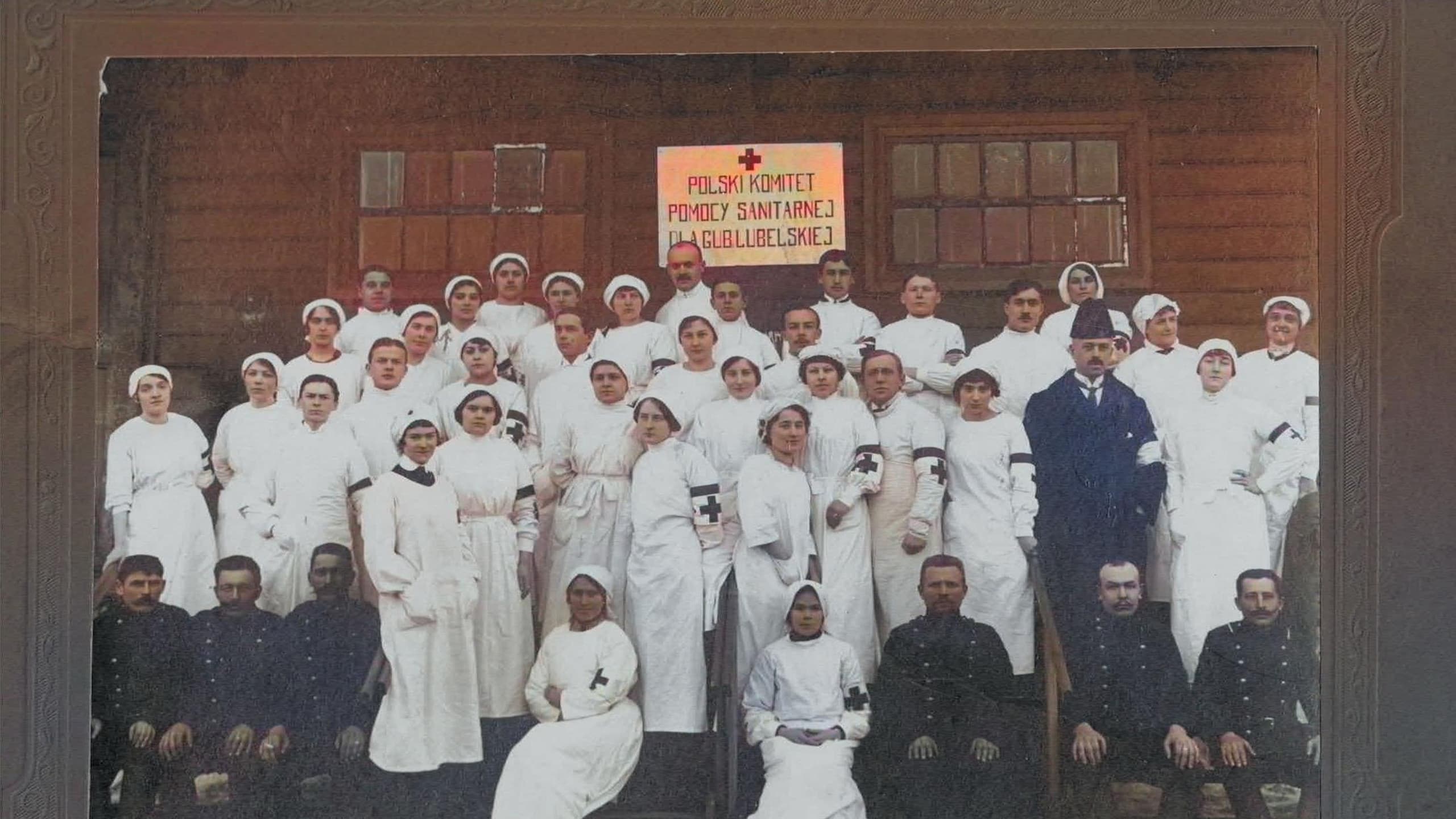
History of PCK
For over a hundred years, the organization has been engaged in activities for those in need, building its history on the values of humanitarianism and solidarity. It is a story about the work of people who, for decades of providing assistance, have shaped the approach to support, creating a network of support and help for those who have found themselves in difficult situations.
1859 - 1910
1911–1918
1919 - 1929
1930 - 1938
1939–1945
1945-1989
1990 - 2000
2001 - 2025
1859 - 1910
Henry Dunant
The founder and creator of the Red Cross movement is Henry Dunant (1828-1910), a Swiss merchant from Geneva, the first winner of the Nobel Peace Prize (1901).
In 1859, on his way to meet the emperor, he passes by the Italian town of Solferino, where the bloodiest battle in Europe at that time (apart from the Battle of Waterloo) is dying – the Battle of Solferino, fought between the Austrian army and the allied French-Italian forces. The number of victims exceeds 40,000. Next to the bodies of the dead, which no one collects from the battlefield, thousands of wounded soldiers die in agony. The small and poorly organized military medical services are helpless in the face of the enormity of the disaster.
Dunant, although he has no medical training, tries to help the wounded and dying. The horrifying experiences haunt him and two years later he writes the book "Memories of Solferino", in which he proposes the establishment of aid associations in all countries, whose trained volunteers could rescue the wounded on the battlefield. In order for the volunteers to be safe, they must be distinguished by a symbol universally recognized by all parties to the conflict and giving the status of complete neutrality. This is how the idea of the Red Cross is born.
All can, in one way or another, each in his own field and according to his abilities, contribute to some extent to […] this noble work.
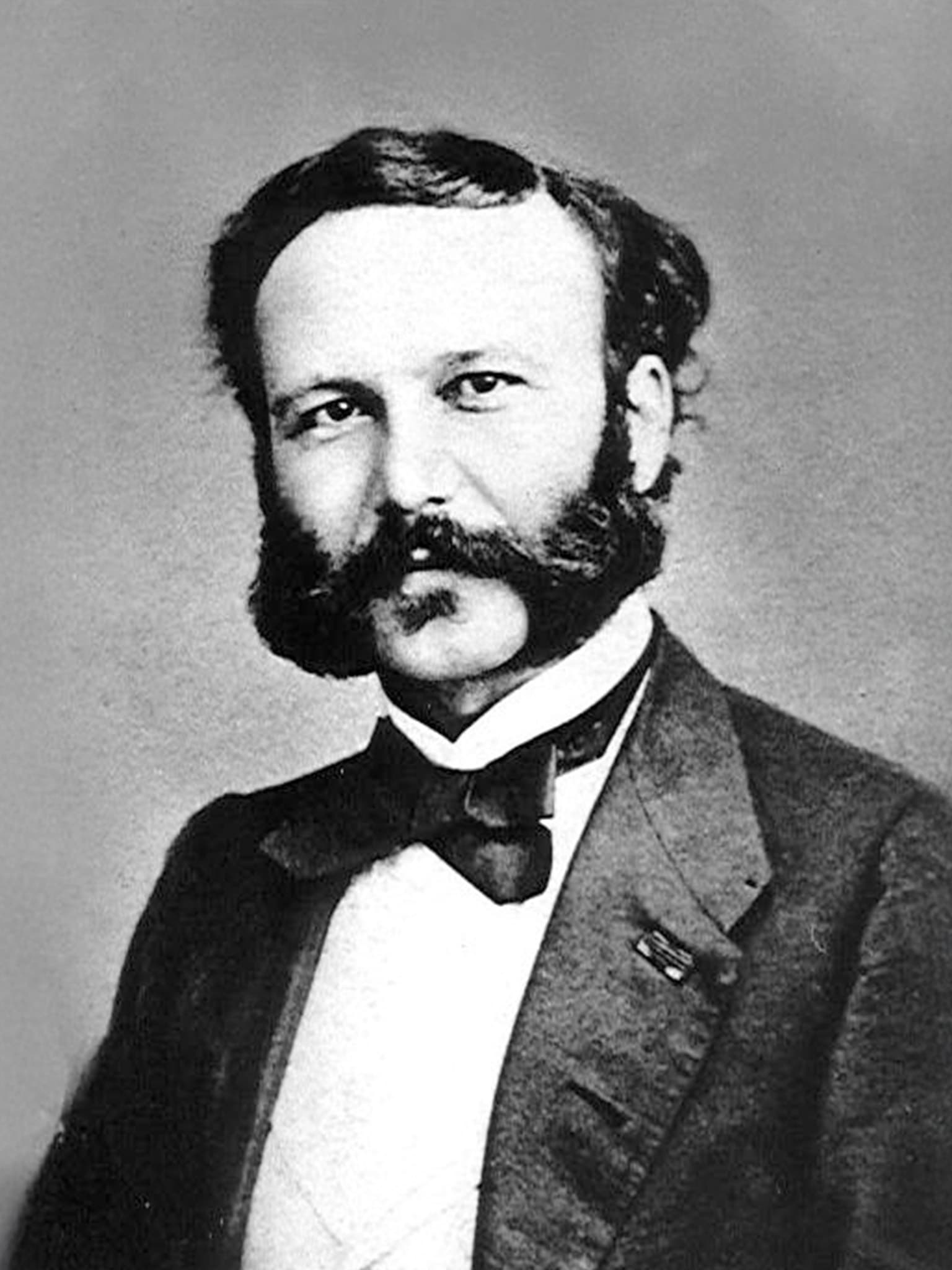
Autor | Źródło
1862
Memories of Solferino
In 1862, Dunant published a book called Reminiscences of Solferino. In his work, he proposed the creation of aid societies in each country that could operate during armed conflicts. In order for volunteers to work safely, he postulated the adoption of a neutral protective symbol - a red cross on a white background, the reverse of the Swiss flag.
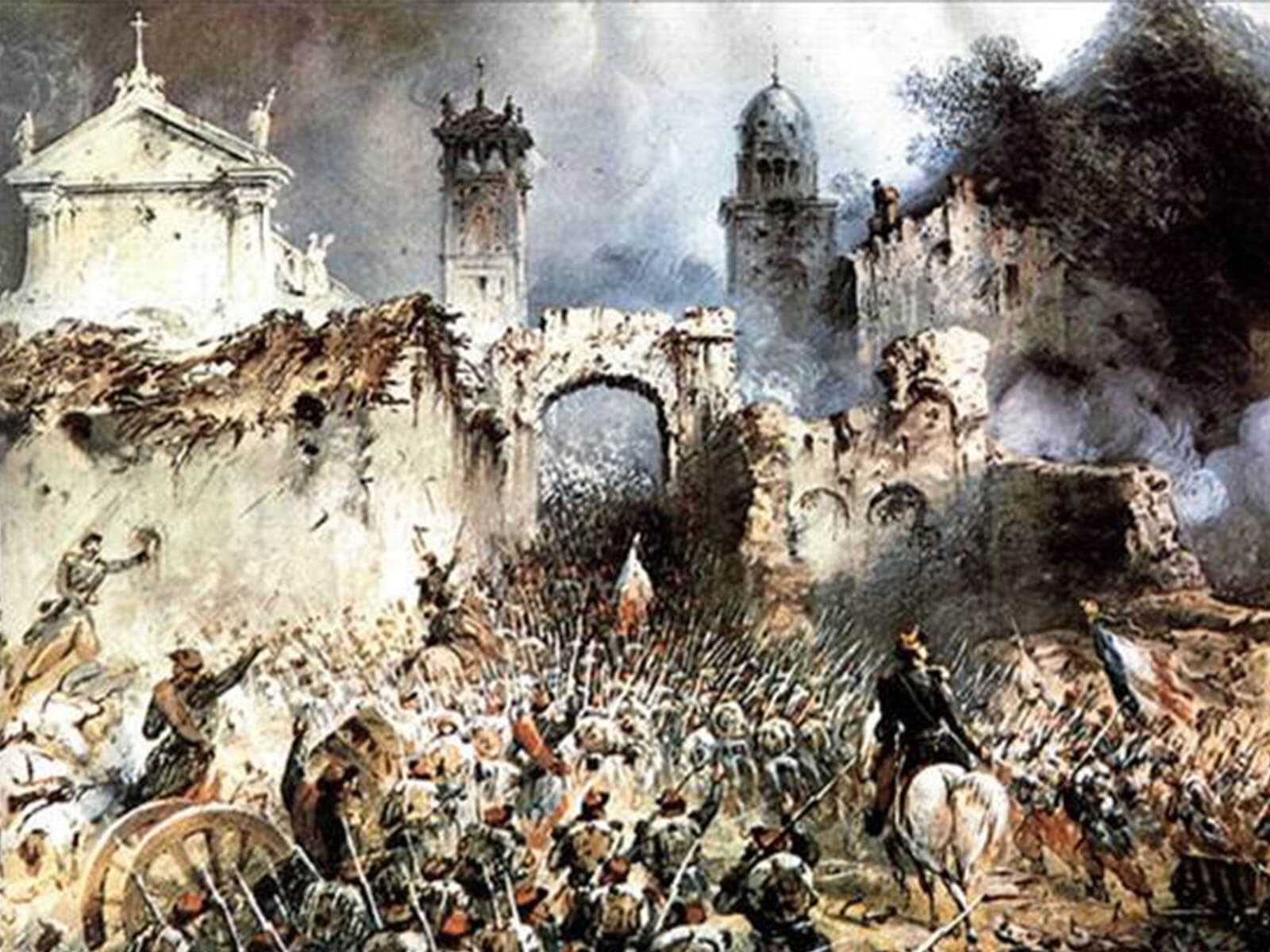
Fot. Archiwum Ilustracji WN PWN SA © Wydawnictwo Naukowe PWN
1863
The Committee of Five and the Birth of the International Red Cross Movement
On February 17, 1863, the so-called Committee of Five was established, which aimed to develop Dunant's idea. In the autumn of the same year, an international conference was held, during which the principles of operation of future humanitarian organizations were established. A decision was made to establish the red cross as a universal protective symbol.
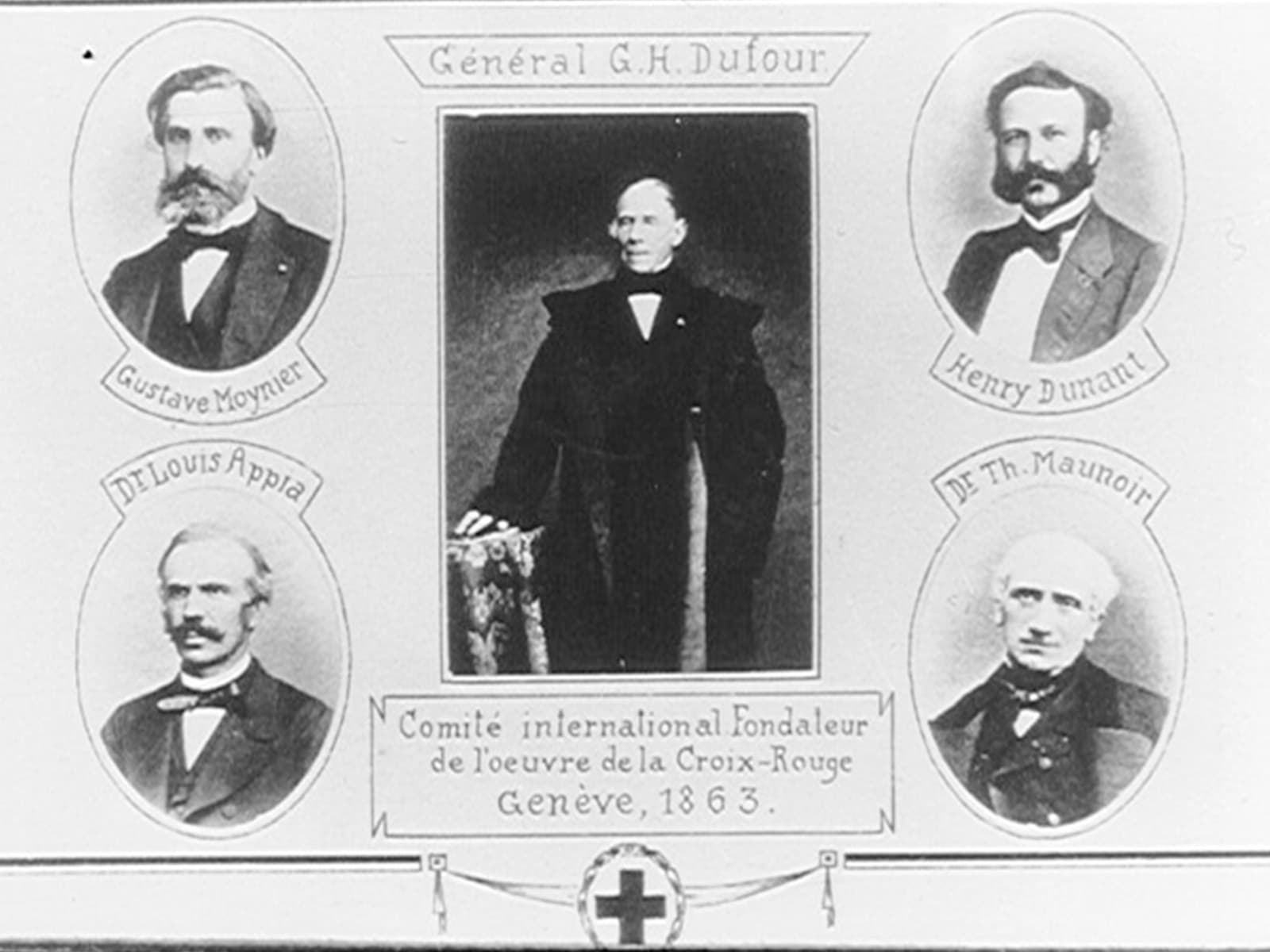
1864
Geneva Convention I
In August 1864, thanks to the support of the Swiss government, a diplomatic conference was convened. On August 22, the First Geneva Convention was adopted, which became the basis of international humanitarian law. This document obliged states to protect wounded soldiers and medical personnel during armed conflicts.
Based on this Convention, wounded soldiers and medical personnel of the warring parties were recognized as neutral persons, protected by law. The symbol of this protection became the emblem of the Red Cross on a white field, which was the inverted national emblem of Switzerland - in honor of Henry Dunant and other initiators of the Geneva Convention.
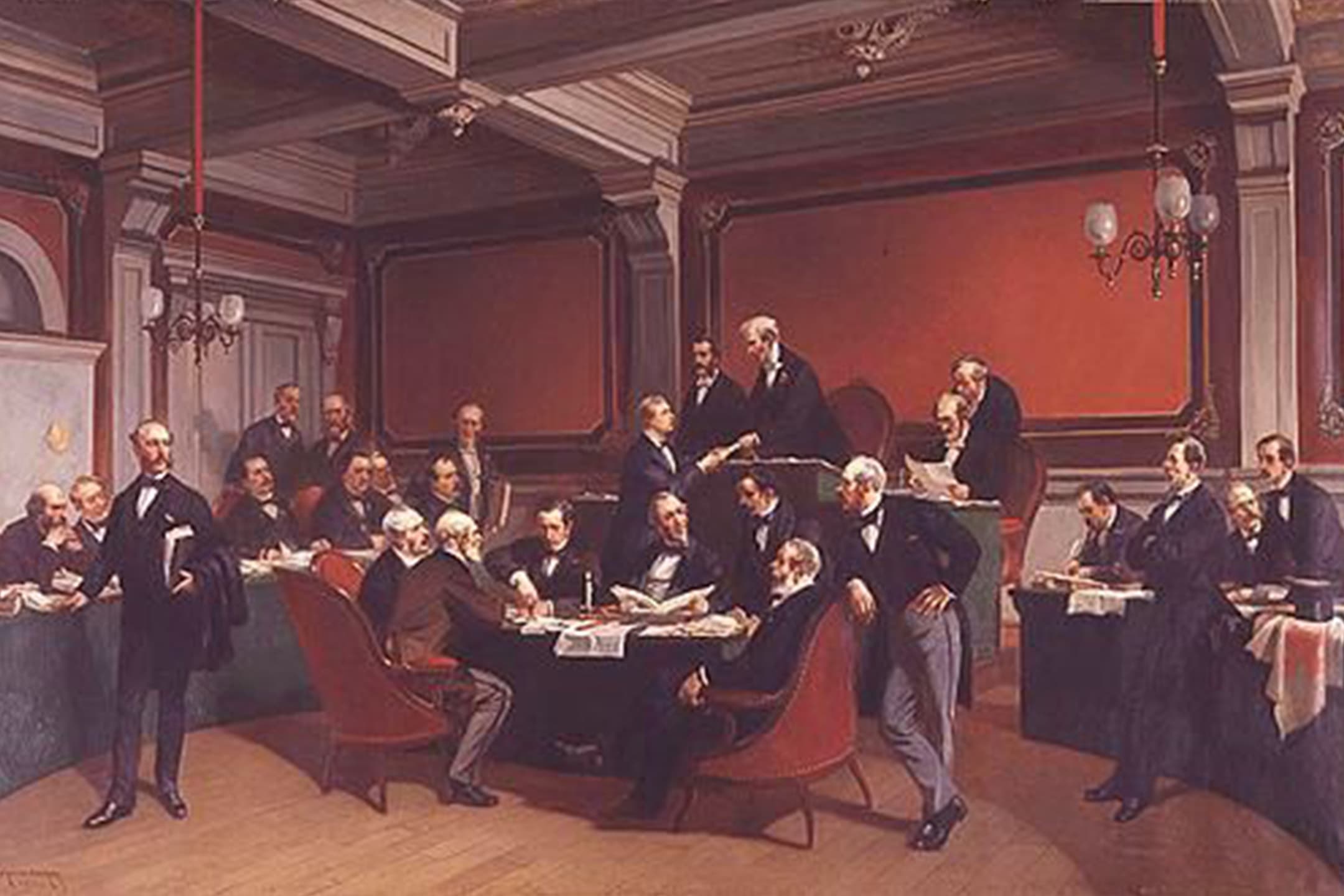
1901
Nobel Prize for Henry Dunant
Henry Dunant, considered the founder of the International Red Cross Movement, was the first recipient of the Nobel Peace Prize in 1901. His humanitarian work launched an international movement to aid victims of war.
The announcement that the founder of the Red Cross had been chosen as the Peace Prize laureate was met with mixed reactions. Dunant received the prize for alleviating the suffering of wounded soldiers, not for organizing peace congresses or reducing standing forces, as Alfred Nobel's will had called for. The Nobel committee chose a broad interpretation of the provision that the laureate should "promote brotherhood among nations." Critics of the prize argued that humanizing war made it less destructive in the minds of most people.
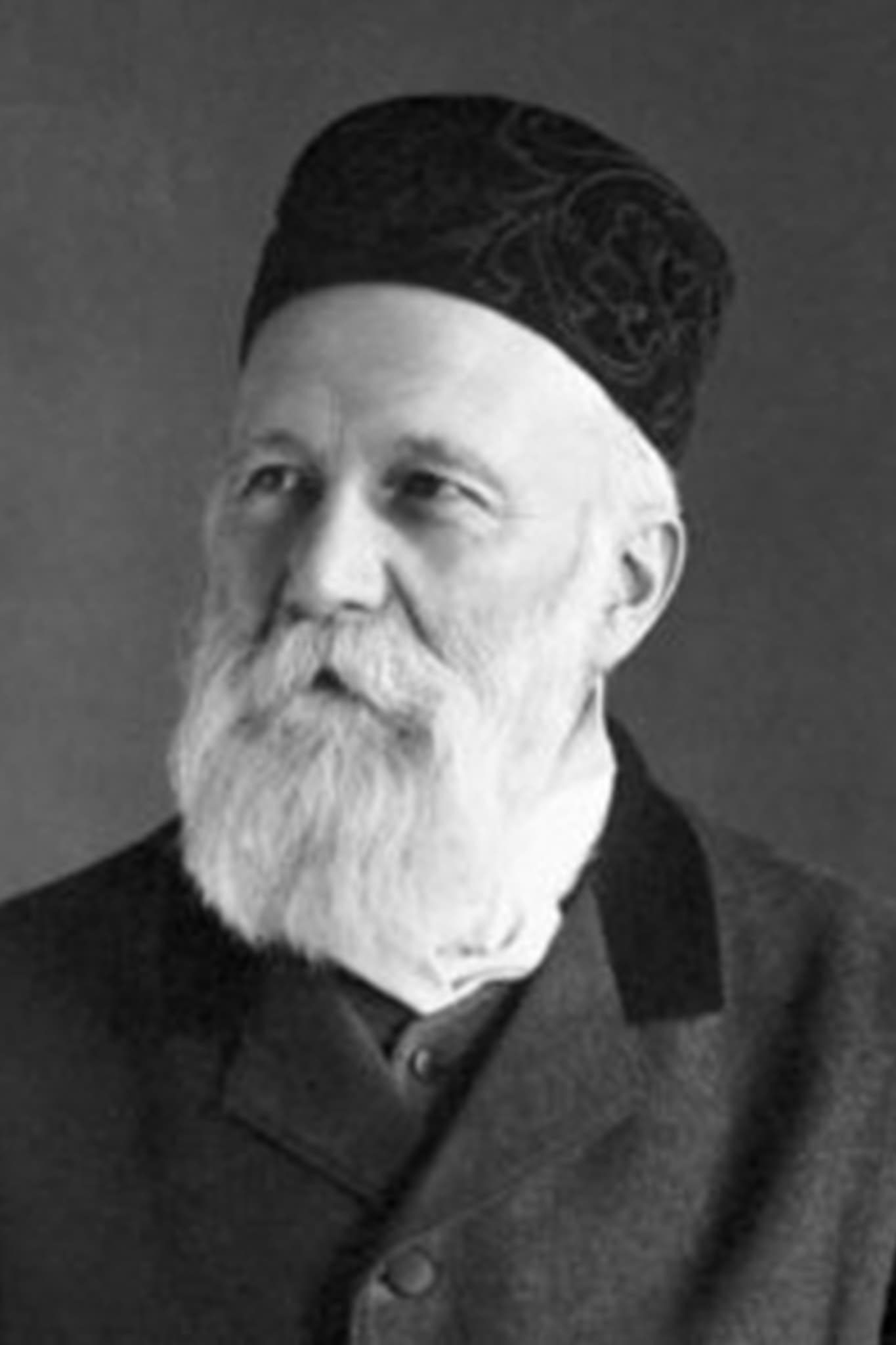
1911–1918
Aid organizations in the Russian and Austrian partitions (1911 - 1914)
At the beginning of the 20th century, in the period preceding the establishment of the Polish Red Cross (PCK), numerous aid organizations of a humanitarian and patriotic nature operated in Poland under the partitions. In the Russian partition, organizations such as the Revolutionary Society of the Red Cross for Aid to Political Prisoners and the Red Cross Society of the "Proletariat" party provided support to political prisoners, exiles and victims of tsarist repression. Despite the restrictions imposed by the occupier, these activities were an expression of social solidarity and patriotic resistance to Russification.
In Galicia, under Austrian rule, conditions were more favorable for the development of aid initiatives. In 1891, the National Association of Ladies of Patriotic Aid of the Red Cross was established, which over time transformed into the unified National Association of Men and Ladies of the Red Cross in Galicia, headquartered in Lviv. The president of this organization was Paweł Sapieha, brother of Cardinal Adam Sapieha. The organization focused on conducting sanitary courses, medical assistance and material support for those in need.
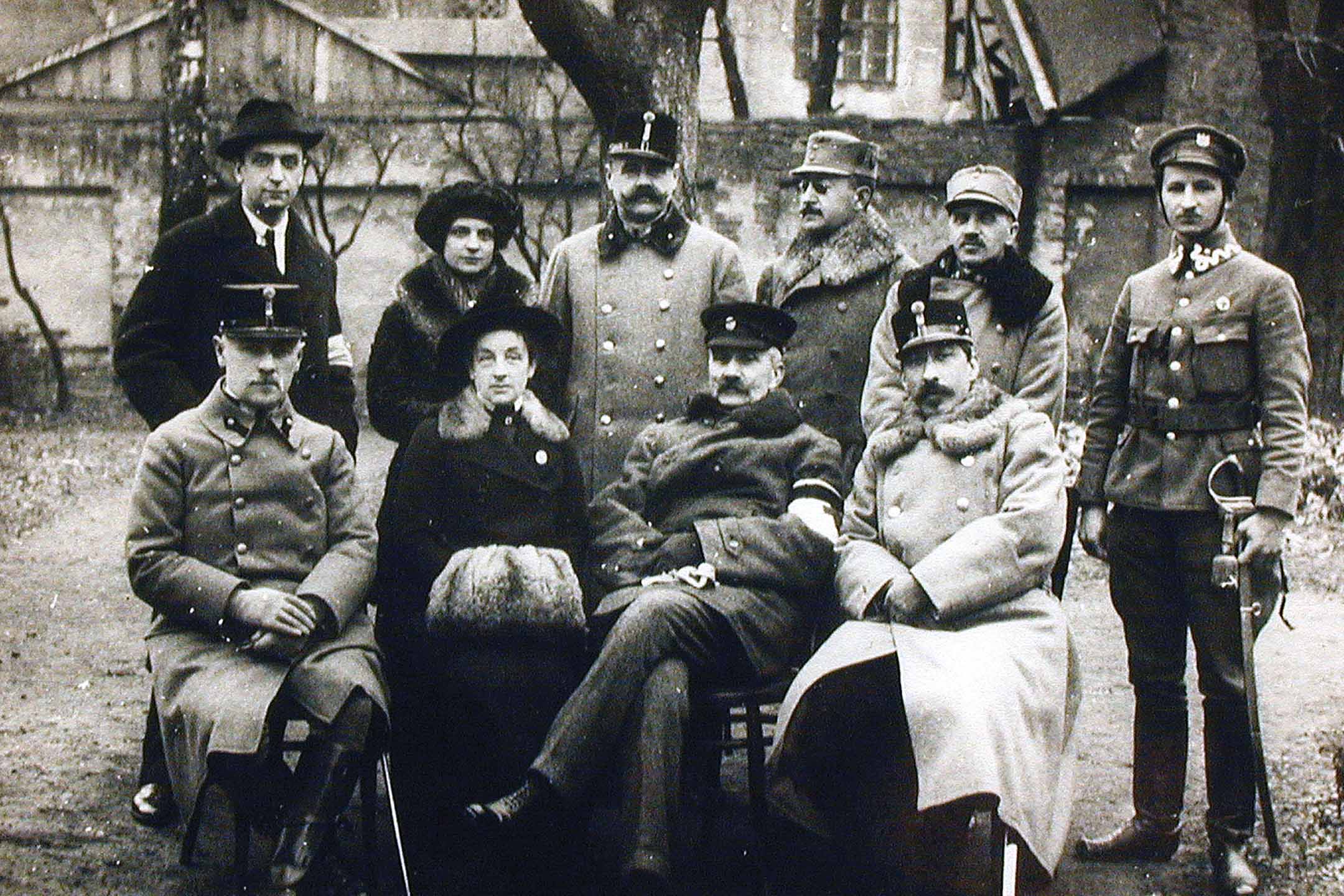
1912
Polish Samaritan
Another important organization operating in Galicia was the Polish Samaritan. The organization was founded in 1912 on the initiative of Bolesław Wicherkiewicz, a professor at the Jagiellonian University and an ophthalmologist. The organization had a statute granted by the Austrian authorities, as well as several branches in Kraków, Lviv, Vienna, Prague, and Baden in Switzerland.
The Polish Samaritan is an association that was a direct precursor of the Polish Red Cross (it had a statute, established branches, members paid contributions, members were required to work socially in the field of conducting sanitary courses, and had its own emblem - a blue cross on a white field). The association tried to prepare sanitary and medical staff for the future war. Over 1,000 people were trained in Kraków alone. Members of the Polish Samaritan took care of shooting teams and then Piłsudski's Legions.
Poles, expecting the outbreak of war, organized sanitary-medical courses and training, taking into account the need to save the wounded and sick.
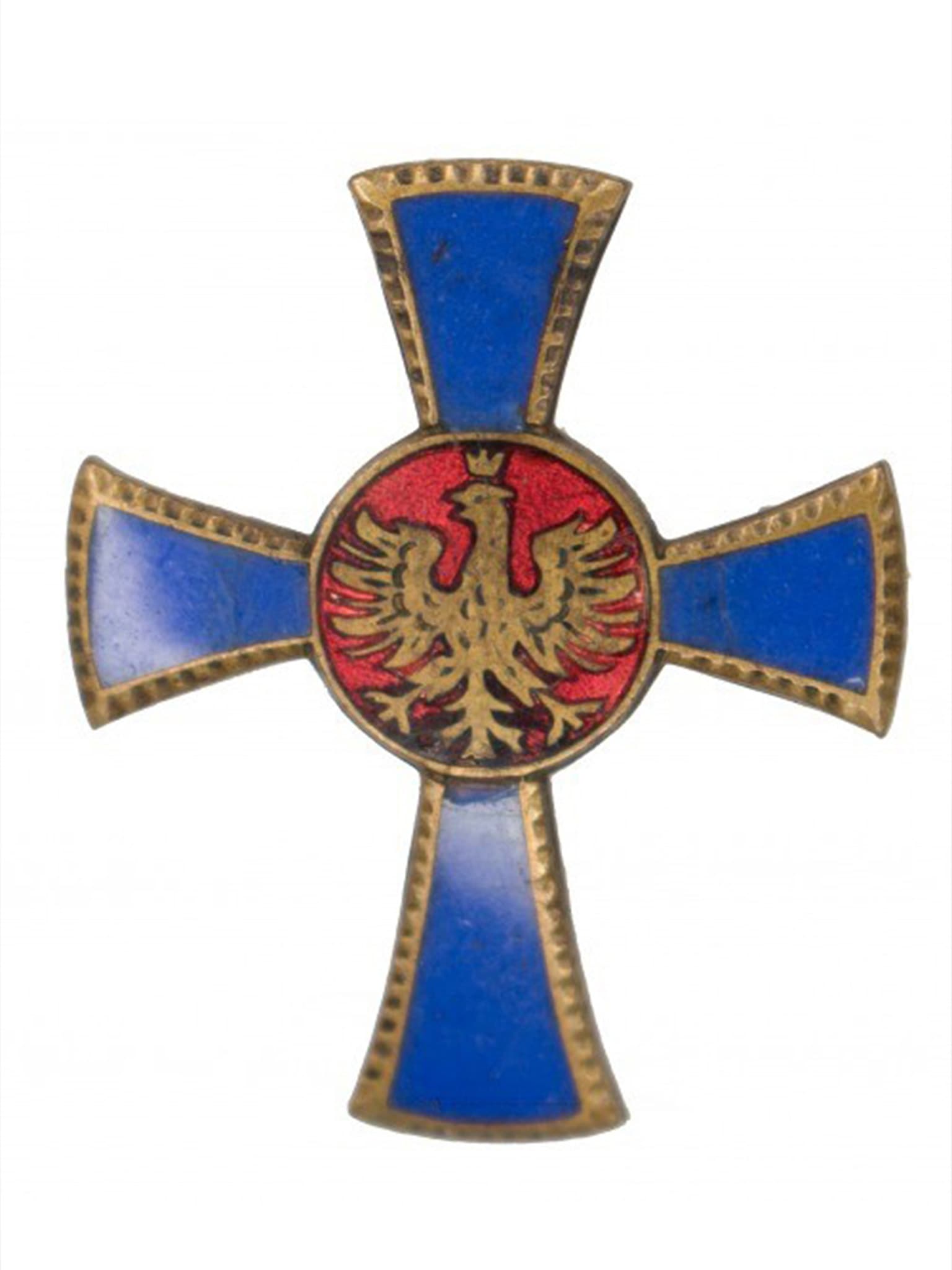
1914–1918
World War I - Polish Committee for Sanitary Aid
In Warsaw, after the outbreak of the war, with the consent of the Russian Red Cross, the Polish Committee for Sanitary Aid was established. The Committee's functioning was supported by Russia both financially and organizationally. This does not change the fact that PKPS constantly made efforts to gain distinctiveness and independence, both in terms of activities and symbols. Part of the money for its activities came from the patriotic part of society.
During World War I, in Warsaw and the Kingdom of Poland, PKPS ran hospitals, nutritional and dressing points, organized medical trains, shelters for the wounded, and eventually also established the Office of Information about the wounded. As the war front moved, after the Germans occupied Warsaw, PKPS moved to Moscow for a period. From here, it also conducted activities for the displaced, organized mobile kitchens, provided medical treatment, and provided sanitary training. Due to the prolonged war, financial and material resources were depleted, subsidies from Russia were reduced and eventually stopped. PKPS was forced to limit its activities and liquidate its institutions until 1918. After the October Revolution, the liquidation of Polish organizations in Russia began. At that time, some of the activists who remained in Warsaw after the PKPS headquarters had been moved to Moscow, resumed their activities in Warsaw. Prince Z. Lubomirski became the head of PKPS in Warsaw. During the war, the Warsaw PKPS mainly ran hospitals in the city.
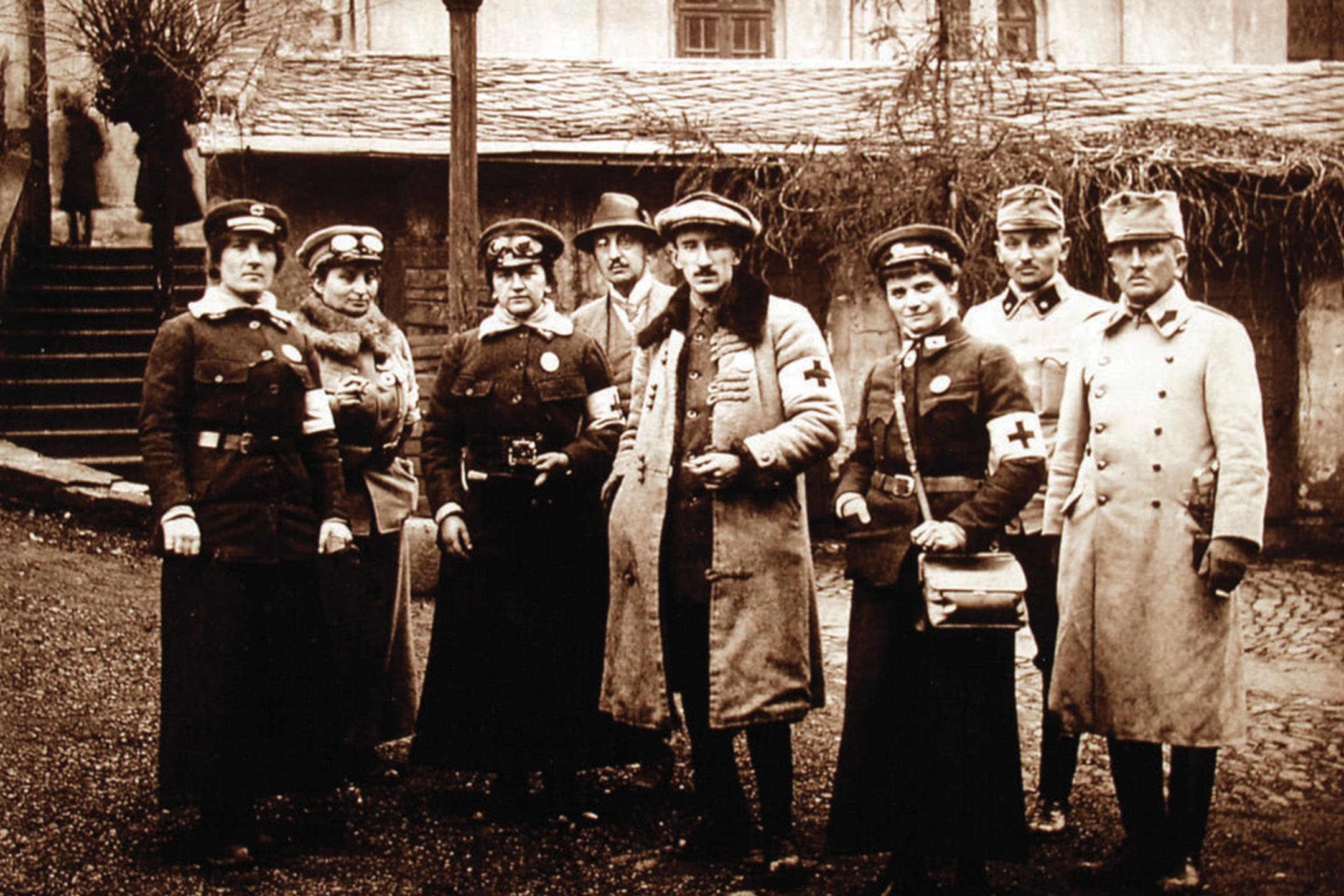
Fot. ze zbiorów Sióstr Dominikanek w Krakowie.
1914-1918
World War I - Other organizations
The Red Cross organizations operating in Galicia began providing aid to soldiers and the wounded immediately after the outbreak of war. The Polish Samaritan passed a resolution on extending sanitary and medical assistance to the Polish Legions on August 22, 1914. The Samaritan's care for the Legions was carried out in cooperation with the Medical Committee in Kraków and the Rifle Red Cross and lasted until the Legions organized their own sanitary and medical services.
During the war, the Polish Samaritan ran its own hospitals, collected funds, medical supplies, provided sanitary training, created infirmaries for the wounded, mainly in private homes, and later also shelters for legionnaires unfit for further service. Later, it organized assistance for civilians.
The National Association of Men and Women of the Red Cross in Galicia conducted similar activities on a very large scale. Its President was Prince Paweł Sapieha.
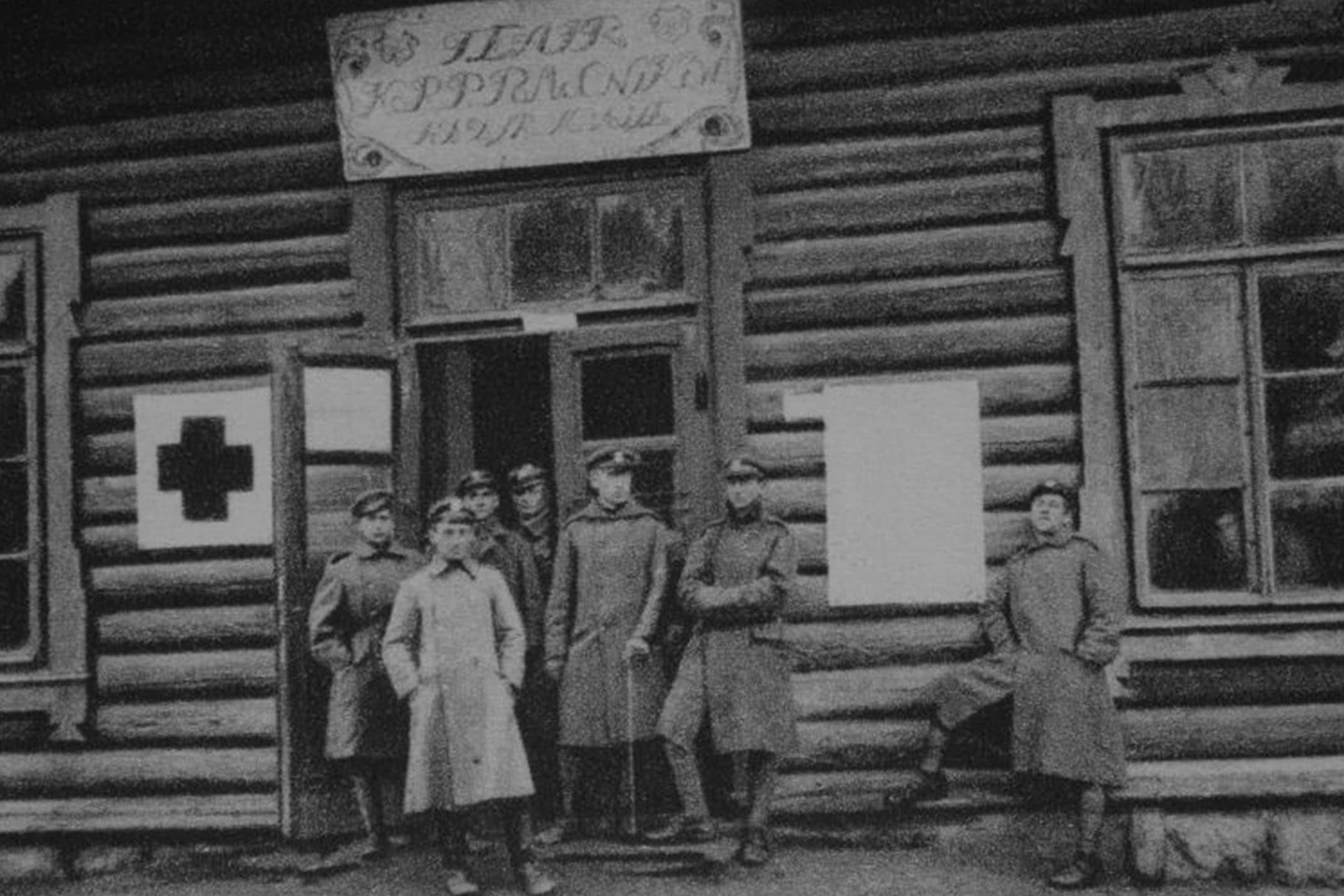
1914-1918
World War I - German Partition
Under the German partition, the formation of Red Cross organizations was very difficult. Poznań Doctors secretly conducted medical courses and training. Unfortunately, the activists were unable to obtain permission, similarly to those in Warsaw and Galicia, to establish a Polish Red Cross organization under the patronage of the German Red Cross. However, Polish society began providing assistance from the moment the war broke out.
Mobile kitchens were organized at railway stations, and medical assistance was provided. In 1915, with the consent of the Prussian authorities, the Poznań Rescue Committee was established, and later, in the lands of the Kingdom occupied by the Germans, the Main Welfare Council was established with the consent of the authorities to care for the population affected during the war. The Council obtained funds for its activities thanks to the enormous generosity of the people of Wielkopolska, but also from abroad.
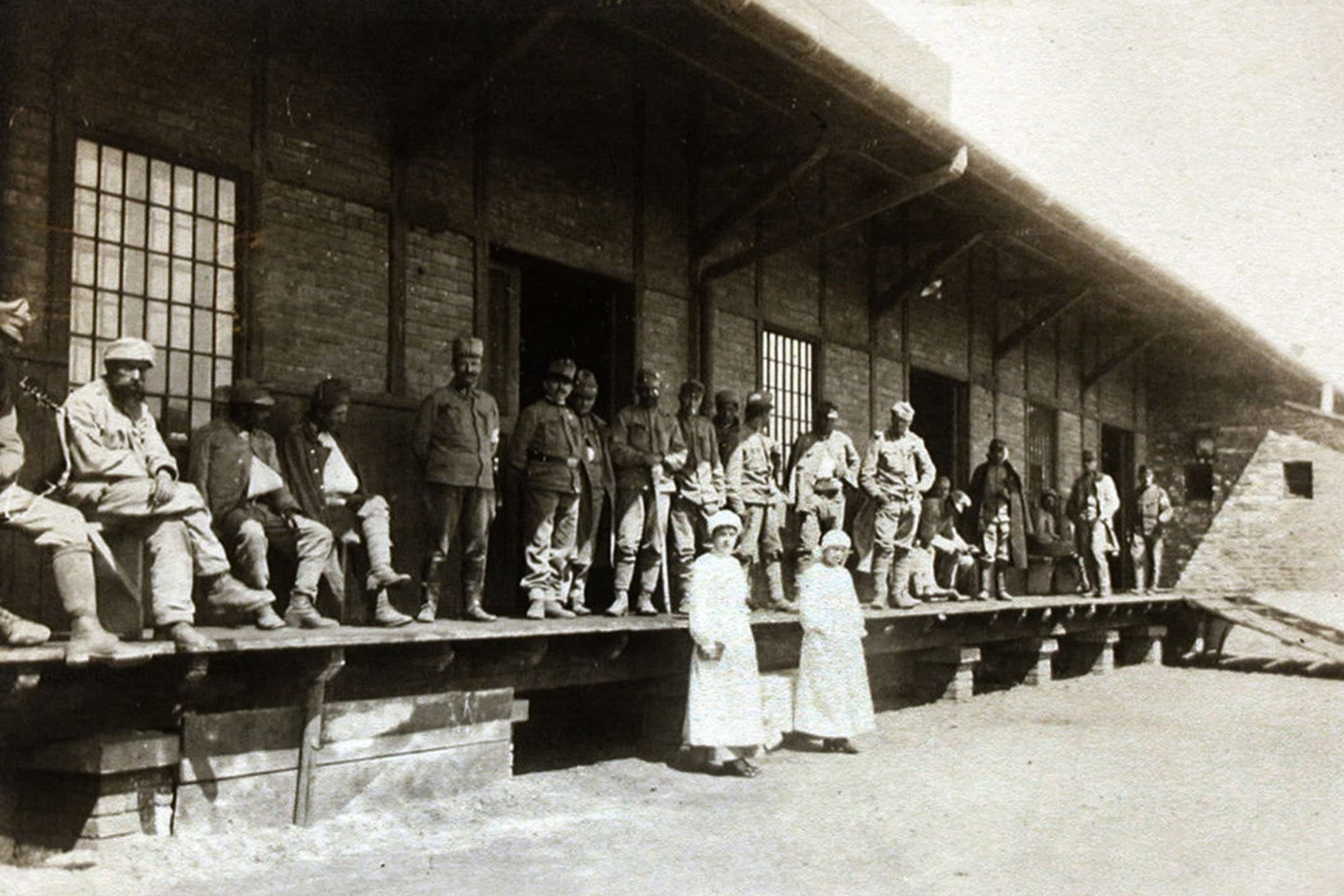
Fot. ze zbiorów Sióstr Dominikanek w Krakowie.
1919 - 1929
Consolidation and establishment of the Polish Red Cross Society
After the end of the war and Poland regaining independence in 1918, the social situation required the unification of the scattered aid organizations. The scale of war destruction was enormous – there was a shortage of food, medical supplies, and infectious diseases posed a serious threat.
In December 1918, Paweł Sapieha, president of the National Society of the Red Cross, applied to the International Committee of the Red Cross with a request to recognize this organization as a national Red Cross organization. However, the lack of a unified organization in Poland and the difficult political situation made it difficult to obtain international recognition.
On January 18, 1919, at the initiative of the Polish Samaritan Association, a meeting of all humanitarian organizations and representatives of the military was organized in the Warsaw city hall. During this meeting, under the patronage of Helena Paderewska, the Polish Society of the Red Cross (PTCK) was established. A 30-person Temporary Committee was elected, and Paweł Sapieha became the first president. The establishment of the PTCK enabled the coordination of aid activities and the achievement of international recognition.
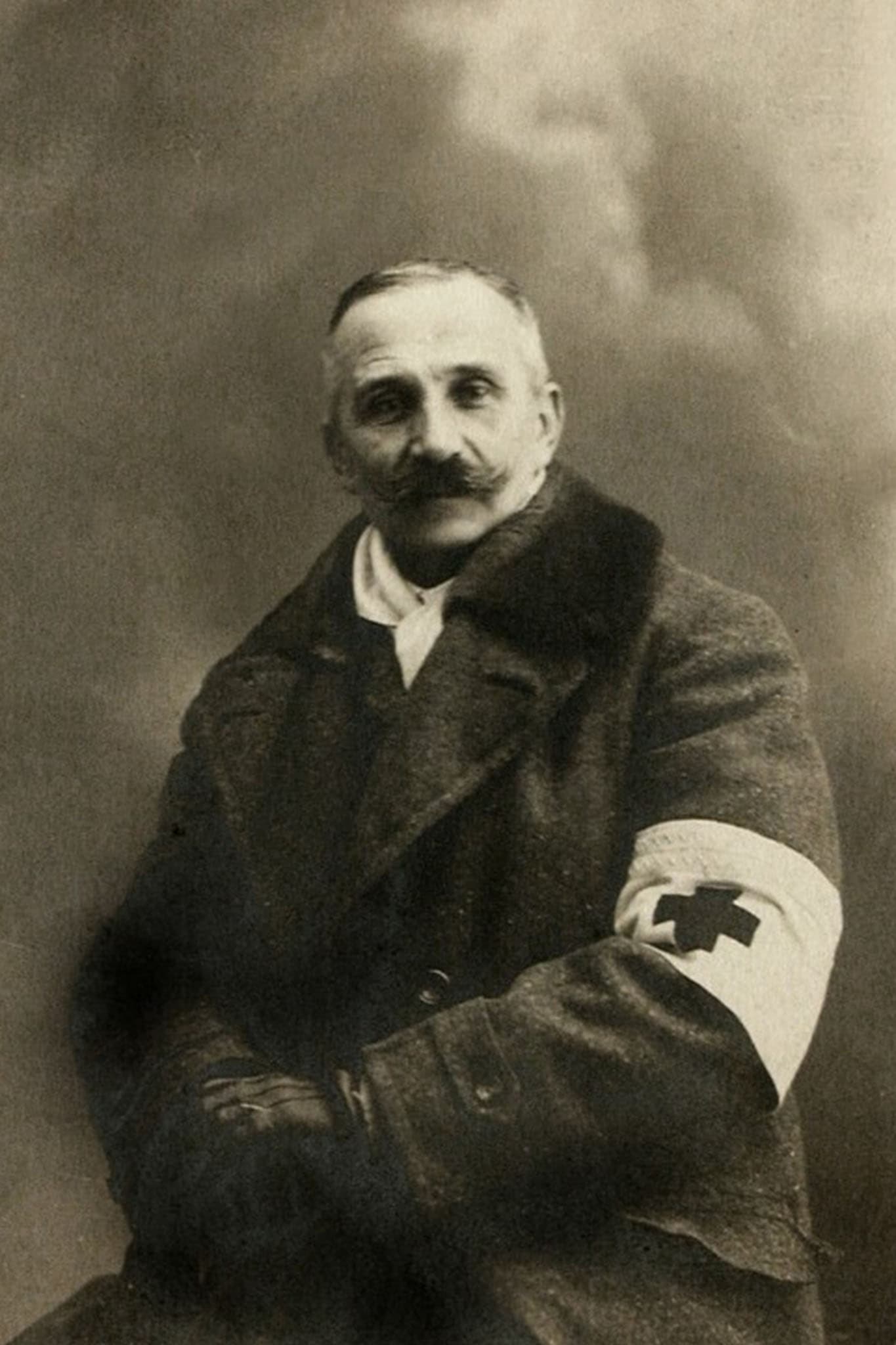
1919 - 1921
Organizational development and international recognition
After the government approved the statute of the Polish Red Cross Society at the constitutional meeting on April 27, 1919, the Main Board was elected. Paweł Sapieha became the president, and after his resignation Helena Paderewska. The statute included the establishment of the first local branches of the Polish Red Cross for Galicia, the Grand Duchy of Poznań and Silesia.
On July 24, 1919, the International Committee of the Red Cross registered and recognized the Polish Red Cross Society as the only Red Cross organization operating throughout the entire territory of the Polish state. On September 16, 1919, the Polish Red Cross Society was admitted to the League of Red Cross Societies (today's Federation).
The integration of Red Cross organizations improved humanitarian activities and united Poles around the idea of helping those in need.
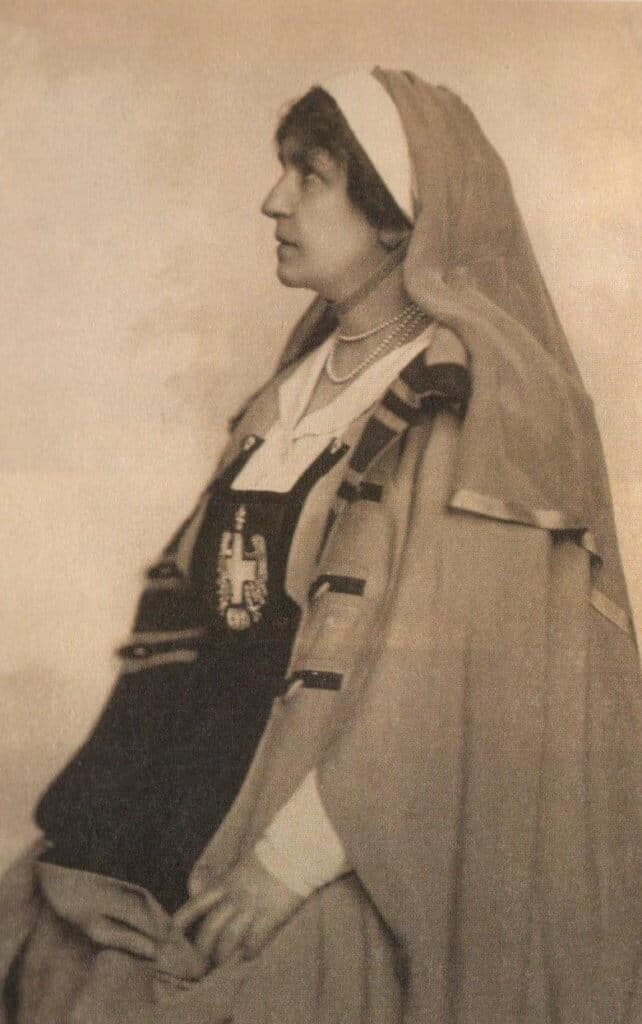
1920
Polish-Bolshevik War
The PTCK played a key role during the Polish-Bolshevik war, organizing hospitals, training nurses and medics, and supporting soldiers by organizing sanitary and food points. Together with the ICRC, it appealed to other national associations for help, which allowed for the collection of essential medical and food supplies. The organization mobilized society to provide aid to victims of the war, both soldiers and civilians.
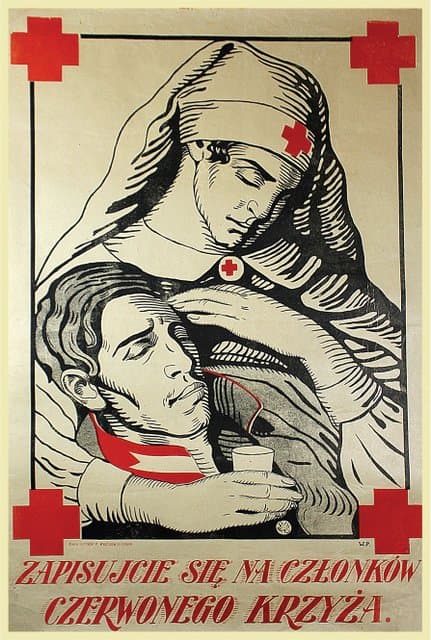
1921–1922
Post-war crisis
After the end of the uprisings and the Polish-Bolshevik war, one of the most difficult periods of its activity began for PTCK. In addition to the enormous devastation of the country and its population as a result of warfare and uprisings, it was necessary to face food shortages, poverty, hunger, filth, a catastrophic health situation, and the spread of infectious diseases such as typhus and cholera. The assistance from the ICRC decreased, and the generosity of society also began to decrease. The enthusiasm accompanying the regaining of independence began to fade.
Difficulties also appeared in the structures of PTCK itself and were related to the resignation of the entire supreme authority, headed by Helena Paderewska. Power in the Society was then entrusted to General Józef Haller. The election of General Haller as the president as a moral authority was intended to save the organization from losing its role and position in social life and from a decline in public interest.
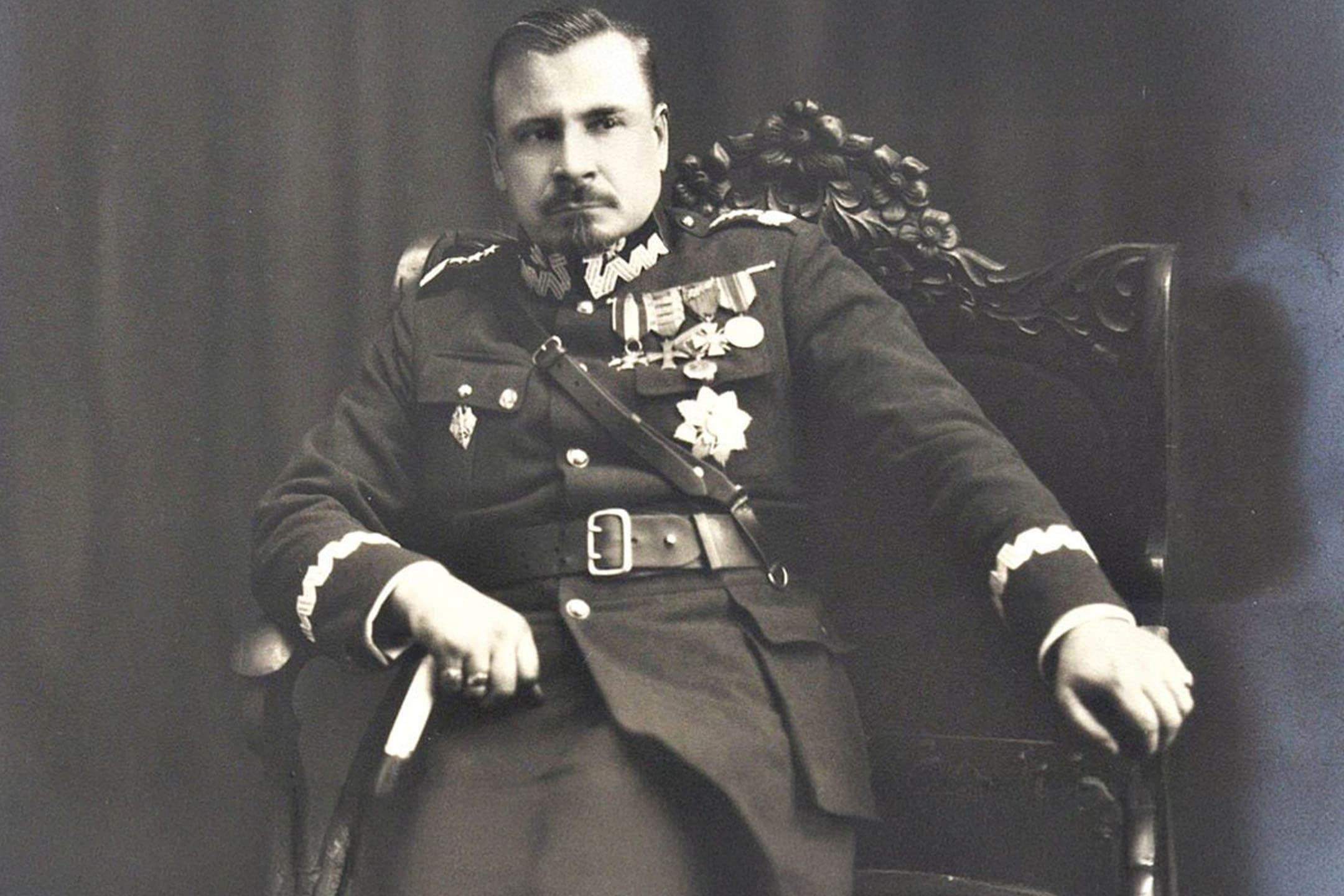
1923–1926
The Beginnings of the Youth Movement
The years 1919-1922 were a period of success, glory and heroism in the activities of PTCK, after 1922 a difficult time began with members leaving the organization, lack of funds in the budget. President General Haller tried to revive and mobilize all local branches to action by visiting them personally. During this period, the Red Cross ran hospitals, sanatoriums, boarding houses and shelters for children, tuberculosis clinics, sanitary and nutritional stations, and took care of the homeless.
Successes include the opening of the first nursing school in Poznań and the establishment of youth circles and the beginning of the youth movement. Organizing youth circles was a way to engage demobilized youth after the end of war operations, as well as a method of using their enthusiasm and energy for further patriotic and humanitarian activities. Red Cross youth circles began to form spontaneously in large and small cities. In 1922 there were 399 circles, and in 1926 there were already 550.

1927–1929
Name change and further development
By virtue of the regulation of the President of the Republic of Poland of 1 September 1927, the name was changed from the Polish Red Cross Society to the Polish Red Cross. In accordance with the content of Article 1 of this Regulation, the Polish Red Cross remained under the patronage of the President of the Republic of Poland. In 1936, the Polish Red Cross received the privilege of an association of higher public utility. These changes and the recognition of the Polish Red Cross by the Polish civil and military authorities promoted the development of the organization. The authorities, mindful of the organization's merits in difficult times of war, providing assistance and building the foundations of an independent Poland, supported the Polish Red Cross's aspirations for development, providing the possibility of obtaining financial resources.
New tasks were set, including cooperation with the authorities in the field of improving the health of society and preparation for war. Due to the huge demand for nurses, on 1 April 1929, the Polish Red Cross Sisters Corps was established, which at the time of its establishment numbered 410 people employed in military formations and paid by the Ministry of Military Affairs. Numerous courses and specialist training were conducted to prepare nursing facilities for military facilities. The chairwoman of the Corps from the beginning was its initiator, Countess Maria Tarnowska. The Polish Red Cross opened successive nursing schools. The first one was established in 1921 in Poznań, but in 1927 another one was opened in Katowice, and in 1929 a third school was established in Warsaw. Graduates were accepted as sisters of the emergency medical service and received a registration card and a mobilization card.
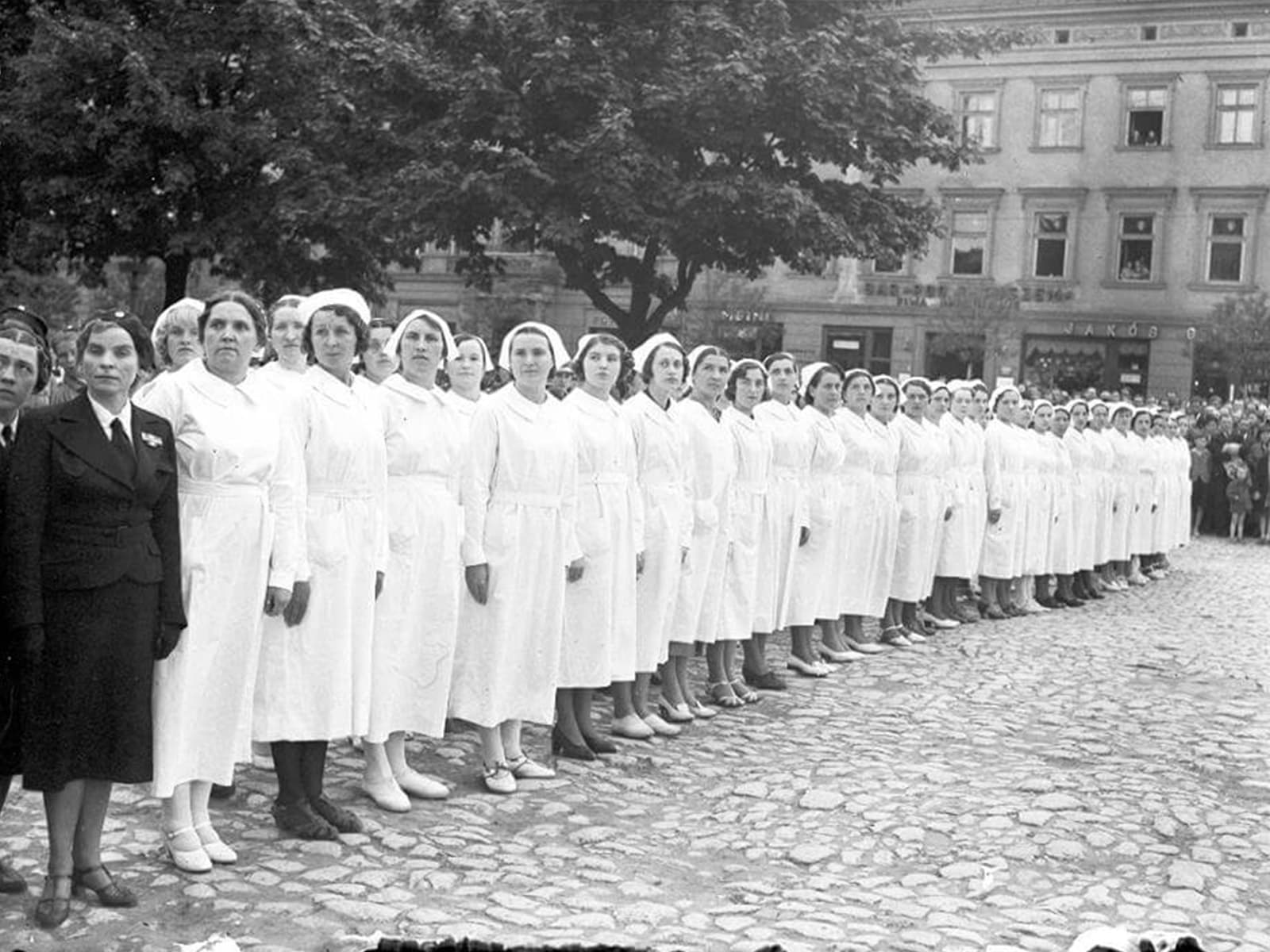
1930 - 1938
Interwar activities of the Polish Red Cross 1930–1935 - Development of structures
After changing its name to the Polish Red Cross in 1927, the organization continued its dynamic development. The Polish Red Cross was involved in a wide range of care, sanitary and educational activities, supporting poor communities, the disabled and children. In the 1930s, the number of health and care facilities was expanded, including hospitals, clinics, dormitories and shelters for the disabled. Much emphasis was placed on combating tuberculosis and other infectious diseases, which was in line with the needs of the Second Polish Republic.
During this period, the Polish Red Cross's nursing education significantly developed. New nursing schools were opened, which allowed for better preparation of medical staff. Educational activities were expanded to include first aid courses, in which thousands of volunteers, both adults and youth, took part.
Every PCK volunteer is ready to devote his time and energy for the good of society – a slogan promoting the activities of the PCK in the 1930s.

1936–1938
Preparation for war
From 1936, the Polish Red Cross began to intensively prepare for a potential armed conflict. The organization cooperated with the Ministry of Military Affairs, training medical personnel and conducting air and gas defense courses. As part of this activity, hundreds of thousands of citizens were trained.
Sanitary infrastructure was also developed. The Polish Red Cross purchased sanitary vehicles and equipped specialist medical points. The Central Blood Transfusion Institute was organized, which allowed for the construction of a blood donation base in Poland. This was an important step in securing the country's health against the upcoming threats.
The number of Polish Red Cross youth circles increased, playing a key role in promoting humanitarian ideas and providing first aid. In 1938, the number of these circles exceeded 7,000, making the youth movement one of the largest in Poland.
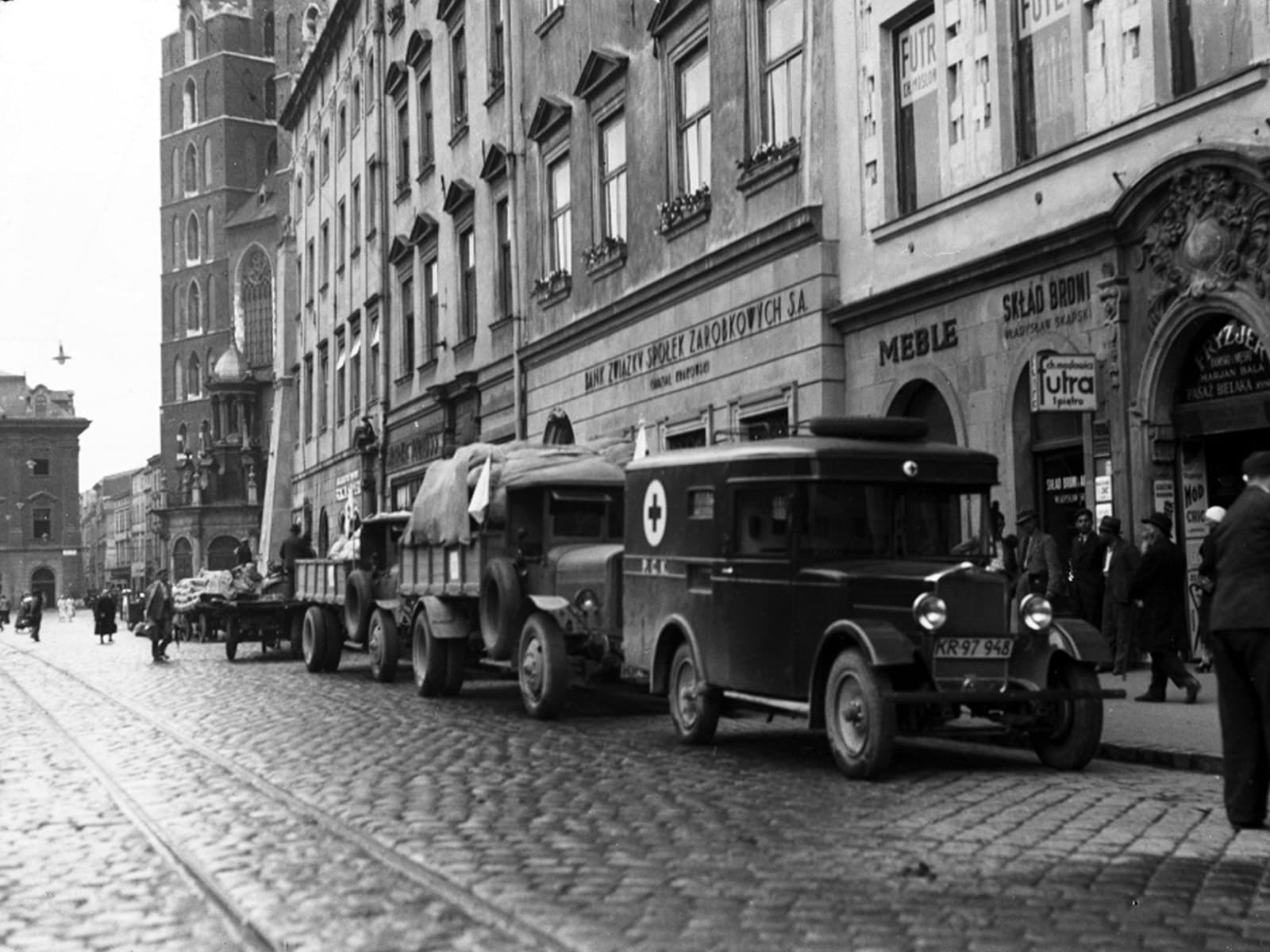
The 1930s
Main achievements of the 1930s
The years 1930–1938 were a time of intensive development for the Polish Red Cross. The organization prepared the country for the upcoming challenges, focusing on education, health care and the development of medical infrastructure. Thanks to this, the Polish Red Cross became a key element of the humanitarian aid system in Poland, enjoying general recognition and support from society.
Establishment of nursing schools in Warsaw, Poznań and Katowice.
Development of the Corps of Sisters of the Polish Red Cross, numbering over 400 qualified nurses.
Organization of a system of honorary blood donation.
Active fight against infectious diseases and feeding children from poor families.
Building social involvement in the area of public health and humanitarian aid.
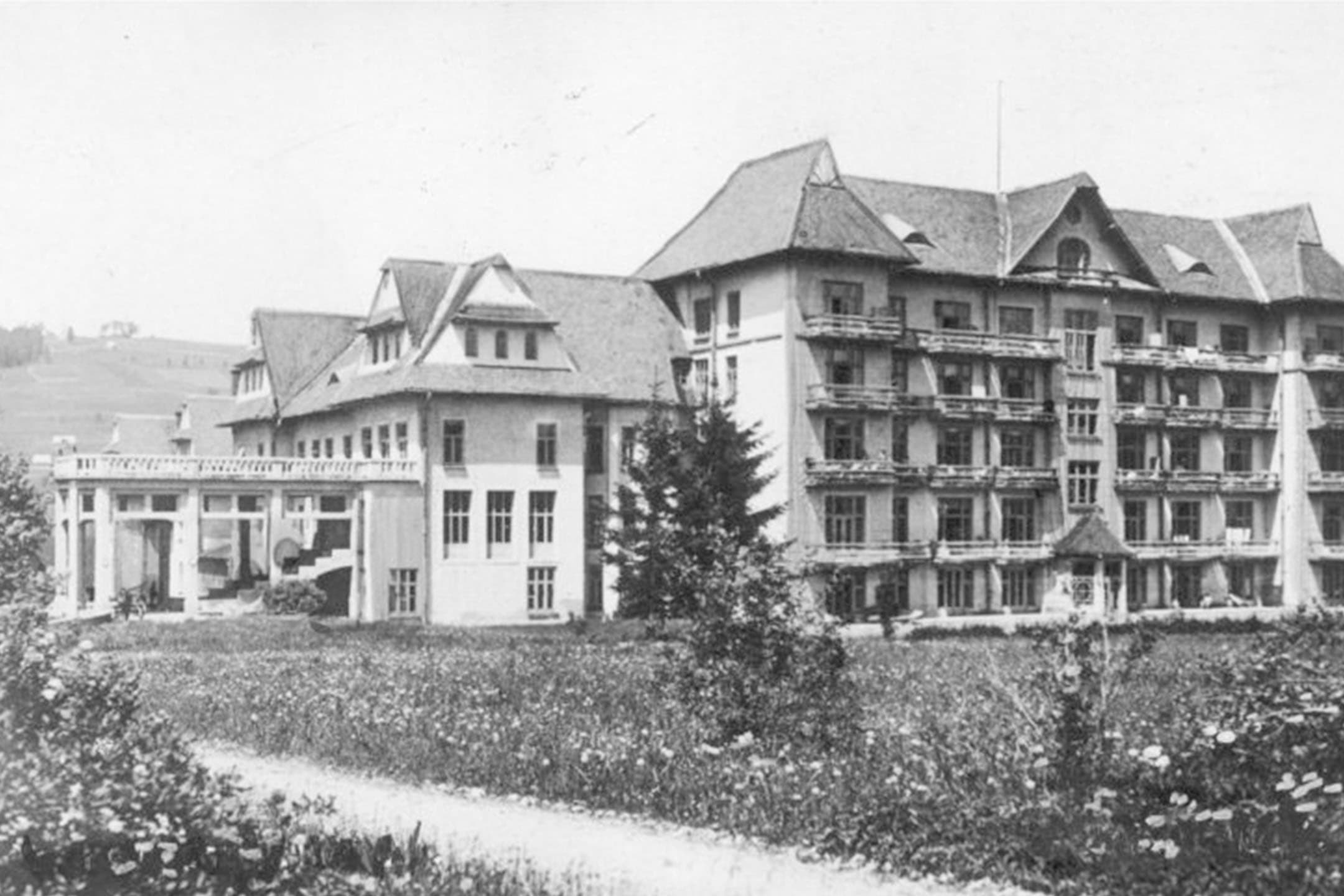
1939–1945
The beginning of the war and the mobilization of the Polish Red Cross
At the outbreak of World War II, the Polish Red Cross (PCK) immediately began relief operations. The organization placed all of its hospitals, sanatoriums and medical facilities at the army's disposal. The staff, nurses and medics equipped with mobilization cards volunteered to help the army. In towns and villages, medical points, shelters and field hospitals were organized, as well as food points for refugees and civilians affected by war operations.
In Warsaw, there were 82 medical and sanitary points operated by 161 rescue sections, which had 24 medical vehicles. In the besieged city, the PCK cared for the wounded in 37 hospitals and organized blood donation campaigns. The PCK Information Office registered injured people and conducted search operations.
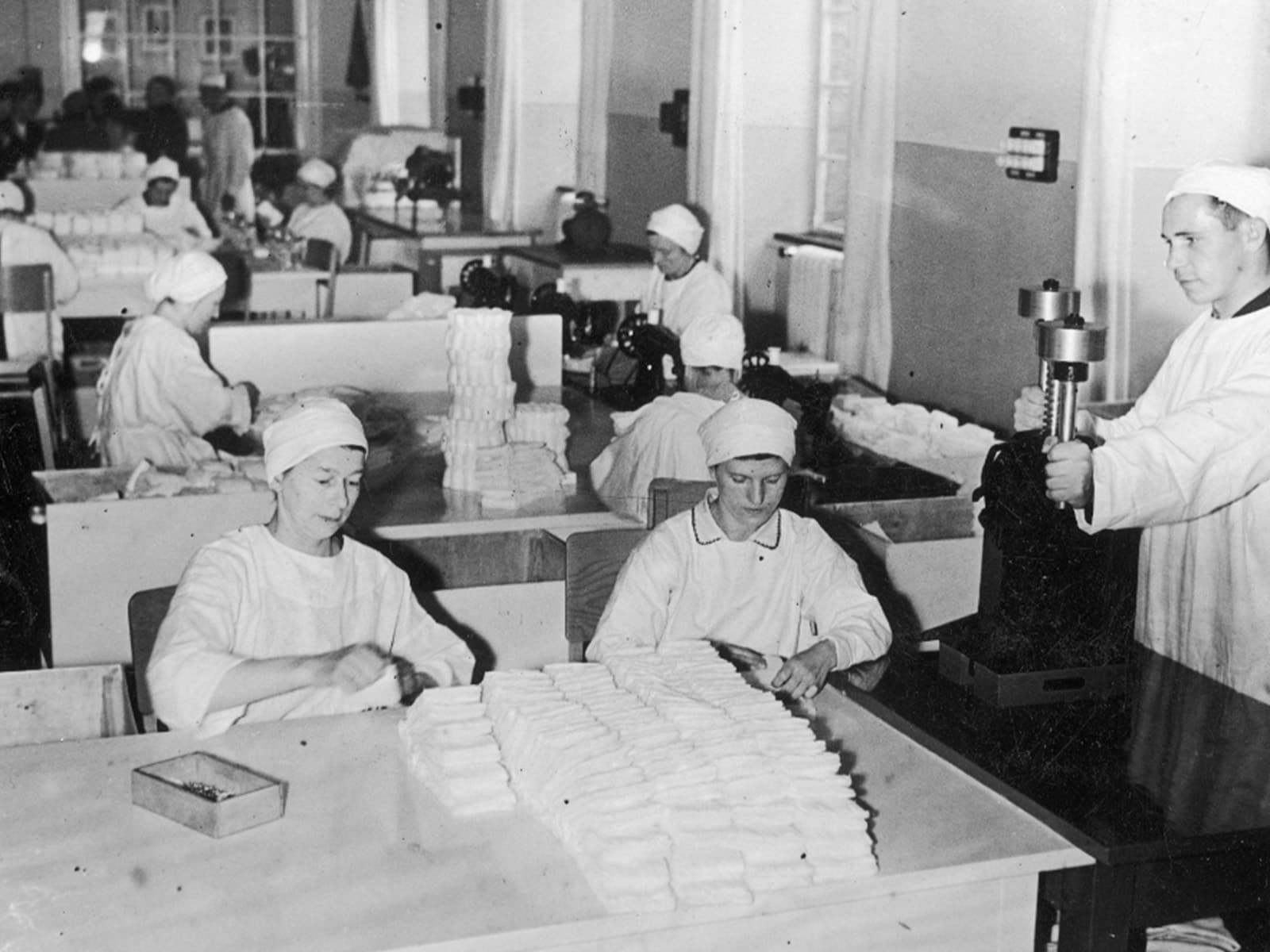
1940–1942
Difficulties under occupation
After Poland's capitulation, the Polish Red Cross found itself under the supervision of the German occupation authorities. Despite the restrictions, the organization continued its activities, focusing on helping civilians, wounded soldiers and prisoners of war. The Germans restricted the activities of the local structures of the Polish Red Cross, confiscating the organization's property and supplies.
In the General Government, where the Germans allowed the Polish Red Cross to operate, the organization provided care for the sick, prisoners of war and injured people. First aid stations, shelters for children and places for feeding civilians were organized.
The German authorities introduced further restrictions on the activities of the Polish Red Cross, demanding, among other things, that the local structures be dissolved and that the organization be subjected to control. The Main Board of the Polish Red Cross firmly opposed these demands, appealing to the International Committee of the Red Cross (ICRC). Thanks to these actions, the Germans withdrew some of the regulations.
One of the most difficult challenges for the Polish Red Cross was running the Information Office. Information was collected about war victims, prisoners of war and missing persons. The office registered thousands of names and tried to respond to inquiries from families.
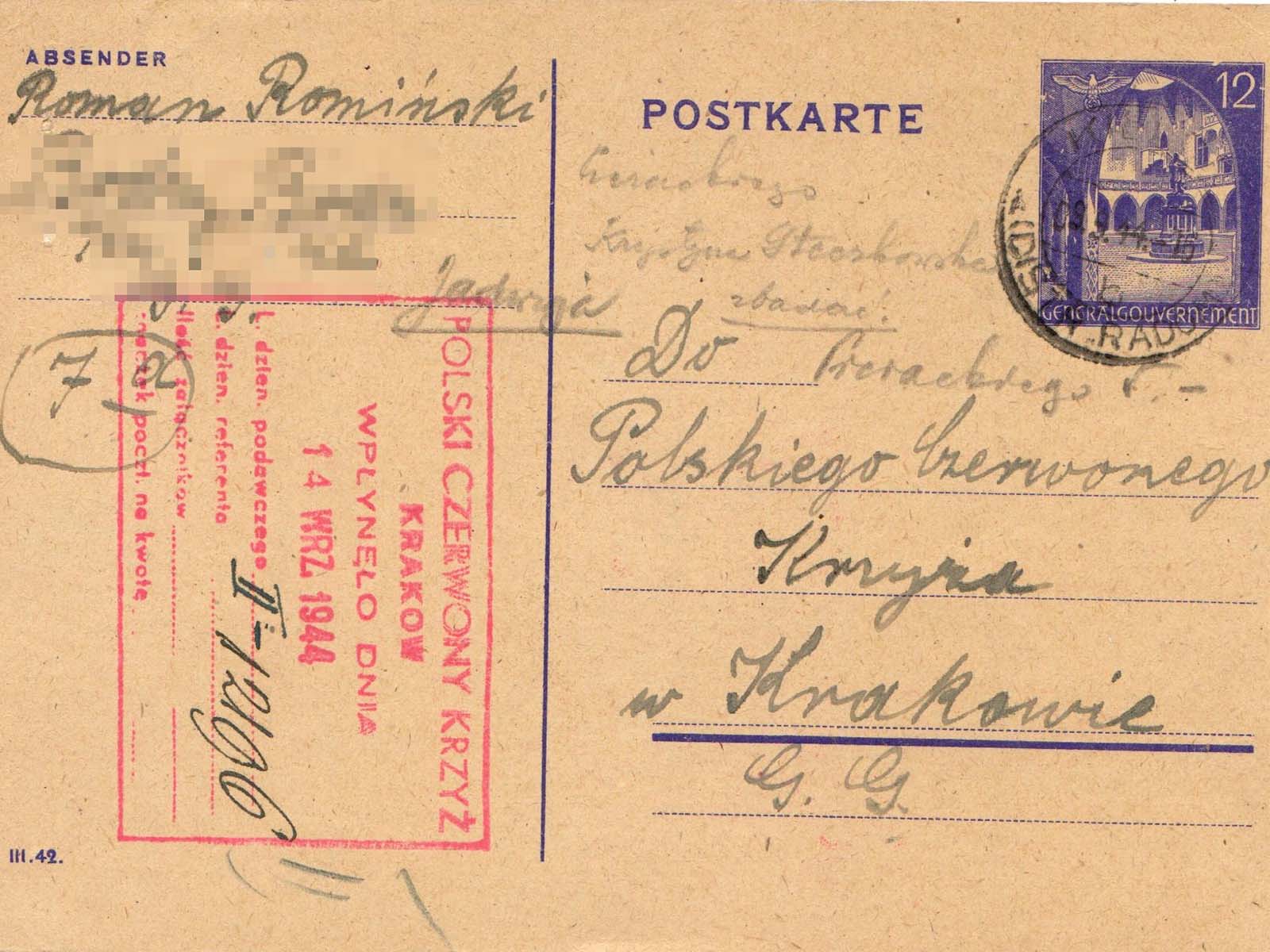
Fot. MOO PCK.
1943
The Katyn Case
The Polish Red Cross played a key role in the exhumation of the victims of the Katyn crime. After the discovery of mass graves of Polish officers in Katyn, the Germans demanded that the Polish Red Cross send a technical delegation. Despite political pressure, the organization took action, taking into account neutrality and international standards. The Polish Red Cross technical commission exhumed and identified the bodies, preparing a report for the ICRC. This documentation was invaluable for the families of the victims and for later historical research.
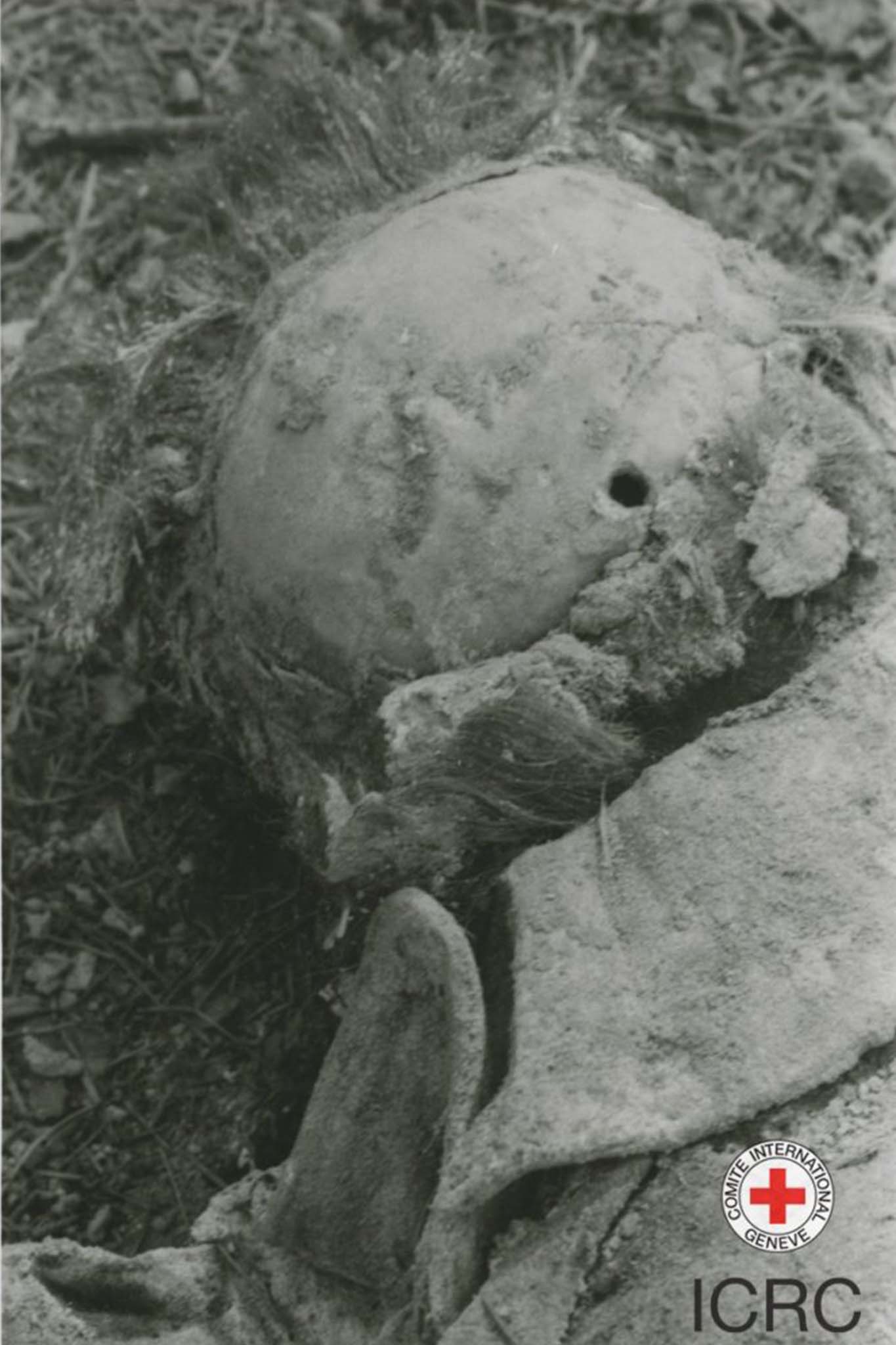
Fot. #ICRC
1944
Warsaw Uprising
During the Warsaw Uprising, the Polish Red Cross played an extremely important role. First aid stations and field hospitals were organized, as well as the evacuation of the wounded. The Polish Red Cross personnel, often risking their lives, provided aid to the insurgents and civilians in the besieged city. The Germans repeatedly violated the principles of the Geneva Conventions, bombing hospitals marked with the red cross and murdering staff and patients.
The Polish Red Cross also supported the residents of Warsaw after the fall of the Uprising. The organization participated in the evacuation of civilians and the wounded to the camp in Pruszków (Dulag 121). Thanks to the ICRC's help, transports of food and medicine arrived.
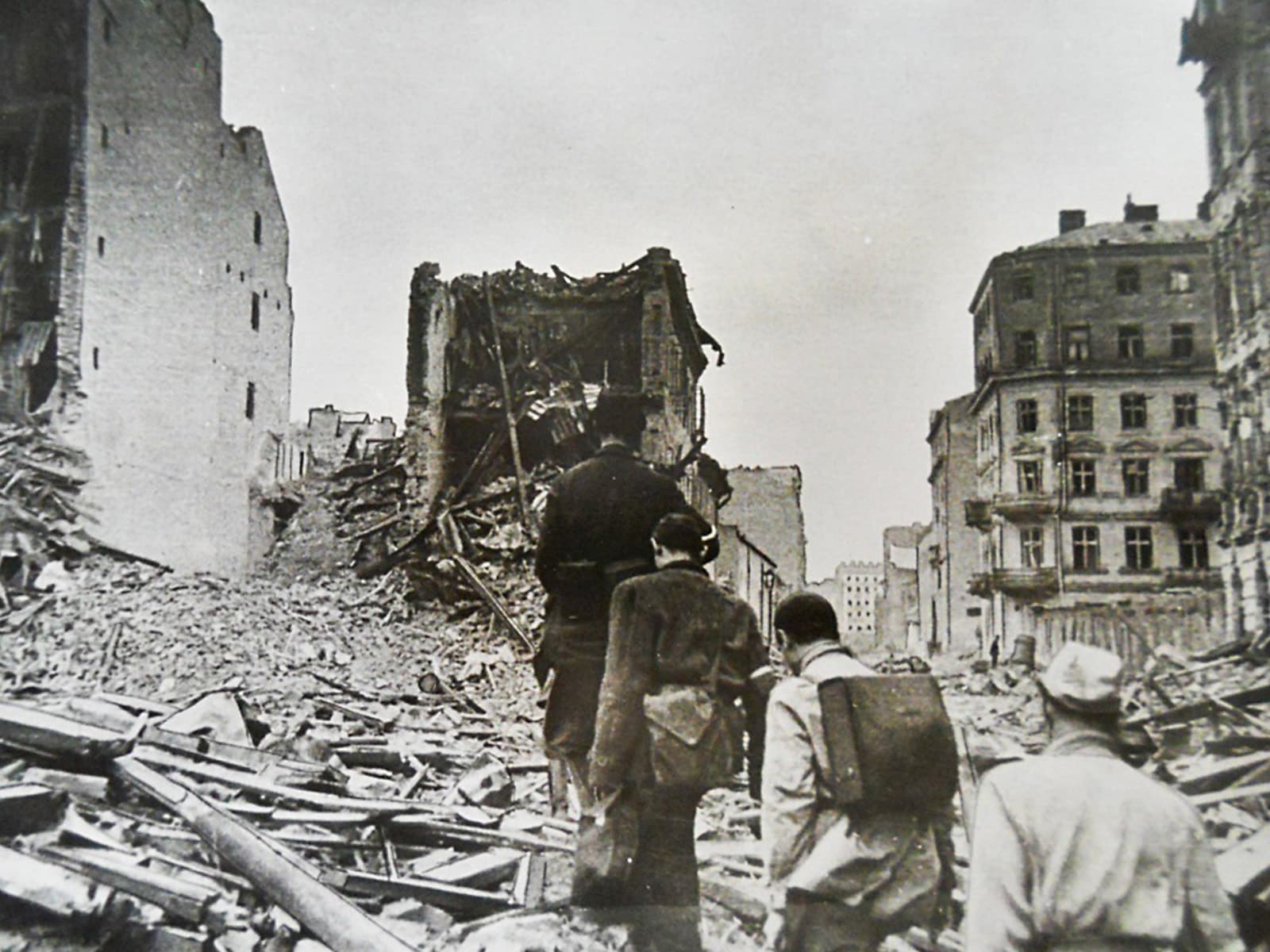
1945
End of the War and New Challenges
Towards the end of the war, the Polish Red Cross focused on helping people liberated from concentration camps, prisoners of war, and those returning from forced labor in the Third Reich. The organization participated in rescue operations, provided humanitarian aid, and registered victims. Many Polish Red Cross employees died, and many others were repressed by both the Germans and the Soviets.
Summary of the Second World War
In the years 1939–1945, the Polish Red Cross operated in extremely difficult war conditions, providing aid to both soldiers and civilians. The organization demonstrated great dedication, neutrality, and effectiveness in providing aid during one of the greatest humanitarian disasters of the 20th century.
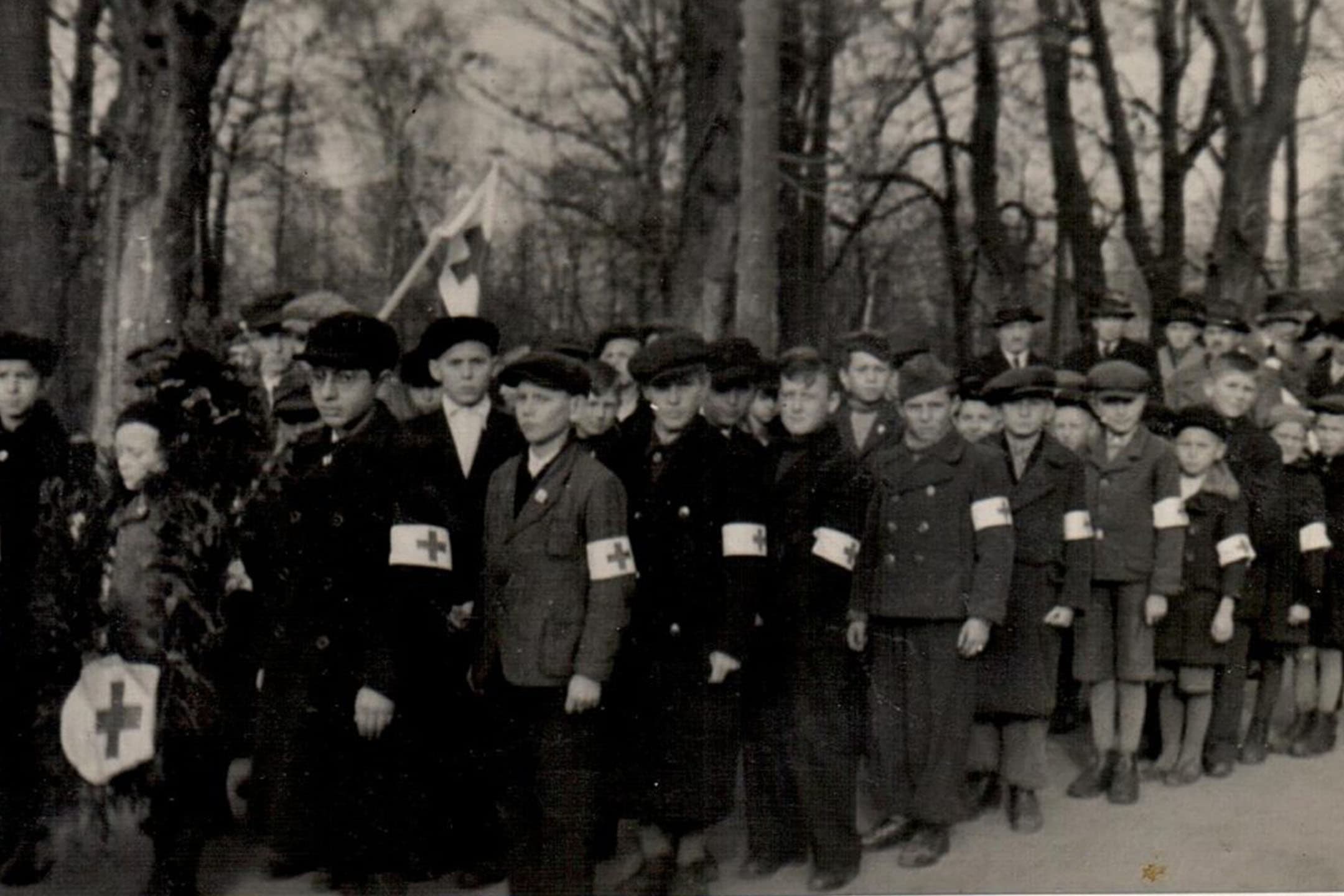
1945-1989
Rebuilding activity after the war
After the end of World War II, the Polish Red Cross (PCK) faced the enormous challenge of rebuilding the country and providing assistance to millions of people affected by the war. The priorities were:
organizing assistance for those liberated from concentration camps, oflags and stalags,
assistance to repatriates from the USSR and Western Europe,
running hospitals, clinics, nutritional and sanitary-care points.
In 1945–1946, the PCK opened 316 clinics, 30 hospitals and 5 sanatoriums. Child care was particularly important – the PCK accepted transports of children from Germany, ran orphanages and dealt with the recovery of Polish children subjected to Germanization. The PCK Information and Search Office played a key role in locating missing persons and conducting exhumations and documentation of war crimes.

Fot. Muzeum Historii Katowic.
1947 - 1951
Growing state control over the Polish Red Cross
After 1947, the activities of the Polish Red Cross began to be subject to increasing control by the communist authorities. In 1948, the state took over nursing schools, and in 1951, the Polish Red Cross took away its ambulance stations, blood donation stations, and numerous sanitary and care facilities. The organization's assets were centralized, and the independence of the Polish Red Cross was significantly limited.
Despite this, the Polish Red Cross continued its humanitarian activities, organizing training courses, supporting people during natural disasters, and running the Information and Search Office.
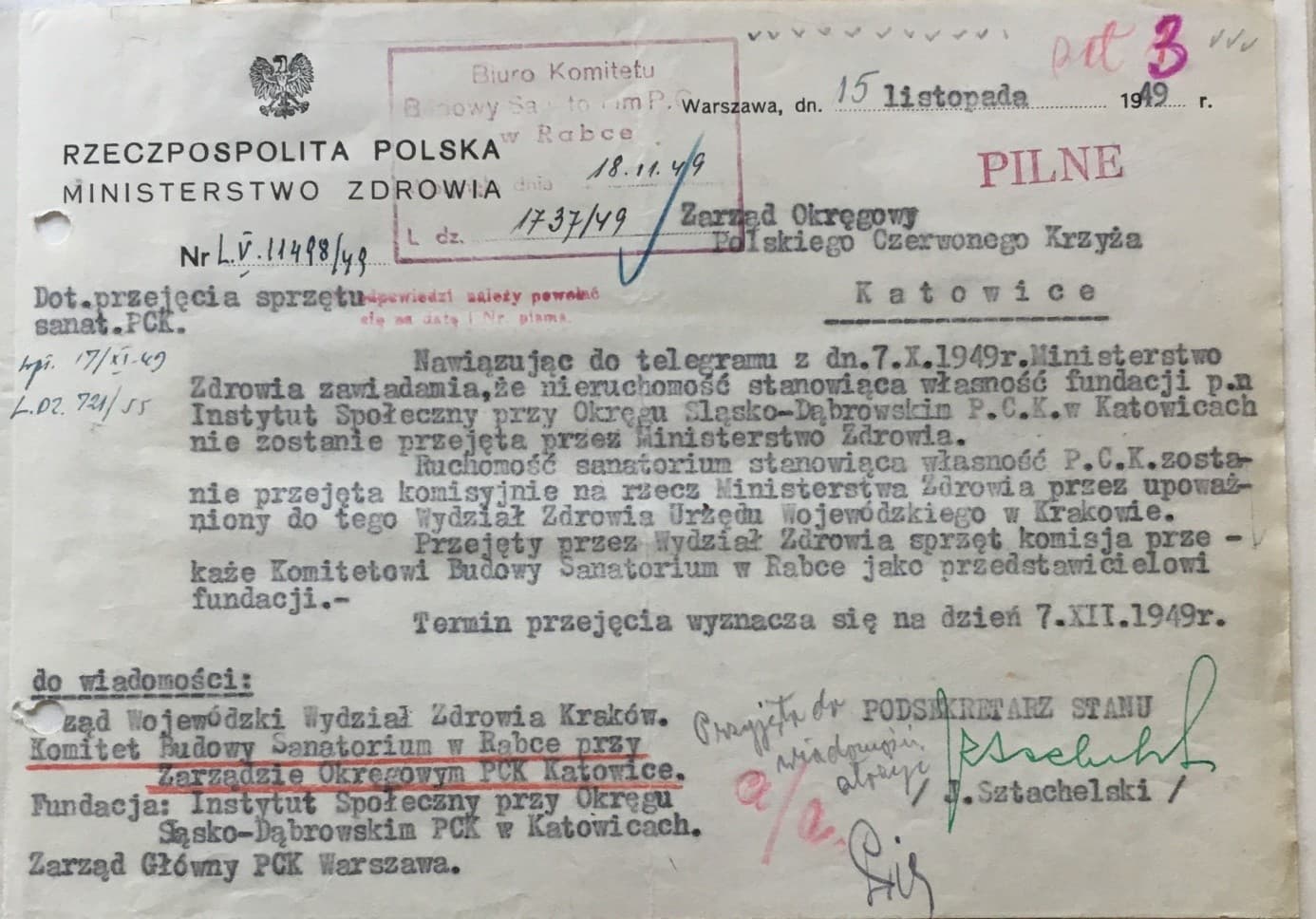
1951-1960
PCK in the new political reality
At the 1st National Congress of PCK Delegates in 1951, personnel changes were made to the organization's authorities, replacing activists from the pre-war and war periods with people close to the authorities of the Polish People's Republic. The PCK was transformed into a mass organization, financially supported by the state budget.
In the 1950s, new educational programs were introduced, including training in first aid, health education, and voluntary blood donation. The PCK organized medical teams and health care points, especially in rural areas. By the end of the decade, there were over 4,000 medical teams and 16,000 trained nurses.
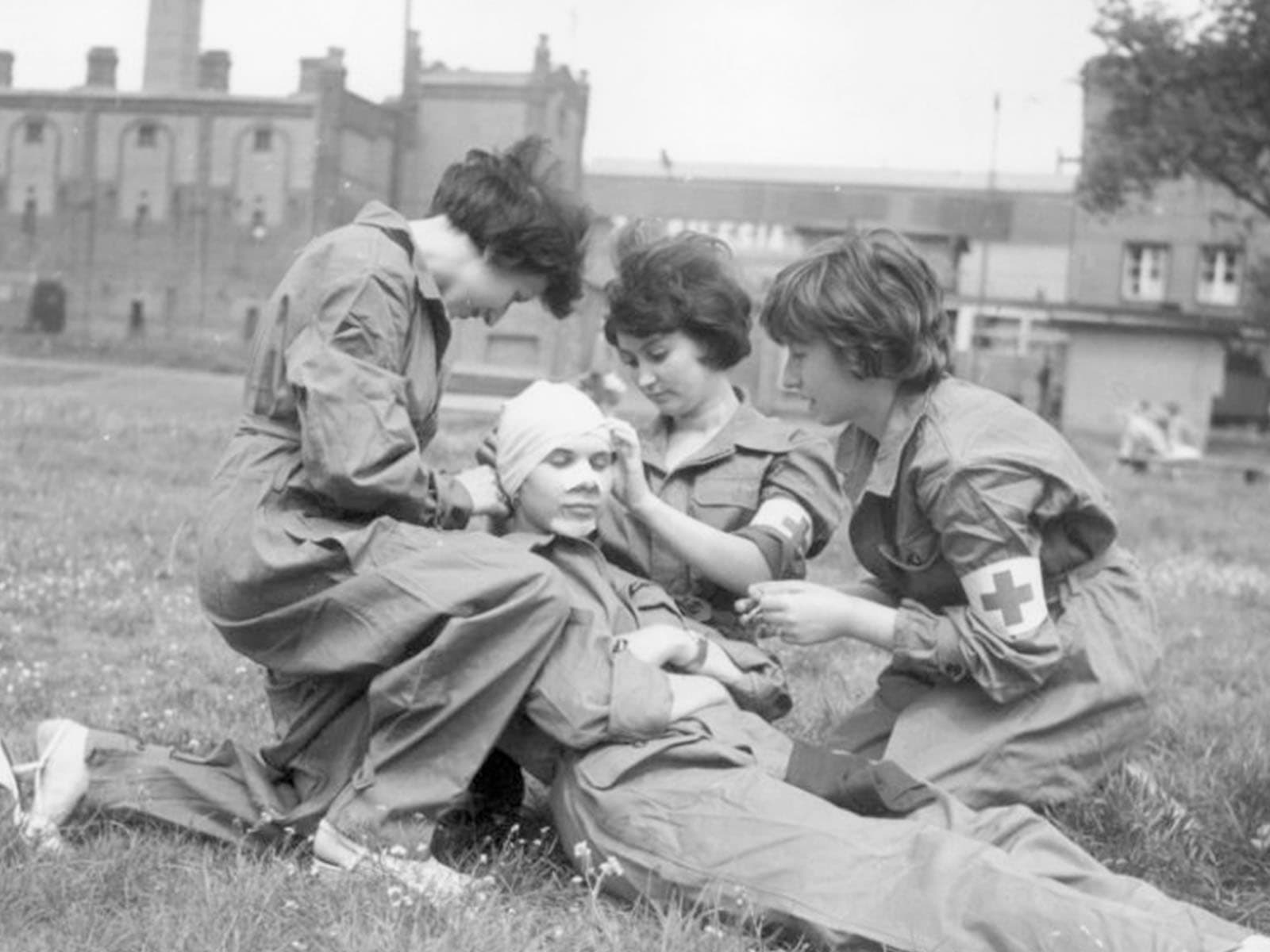
1961-1970
Consolidation of the role of the Polish Red Cross in the PRL system
In 1964, the PCK Act was passed, which defined the legal basis for the organization's operation. The PCK was granted the right to run the Information and Search Office, organize first aid courses, and promote voluntary blood donation.
The organization's activities focused on mass educational campaigns, including hygiene competitions, vaccinations, and combating infectious diseases. The "Squirrel" program was introduced, the aim of which was to shape oral hygiene habits in children. By the end of the 1960s, the number of PCK members reached 4 million.

1971 - 1980
Development of structures and new challenges
The country's administrative reform of 1975 led to the reorganization of the PCK structures. Provincial boards were established, which made it easier to coordinate activities. The scope of care services was expanded by increasing the number of care points and the employment of emergency nurses.
In the 1970s, health and sanitary education was intensively developed. Exhibitions, cleanliness competitions, health knowledge tournaments and first aid olympics were organized. The PCK participated in international humanitarian aid actions, supporting countries affected by natural disasters.
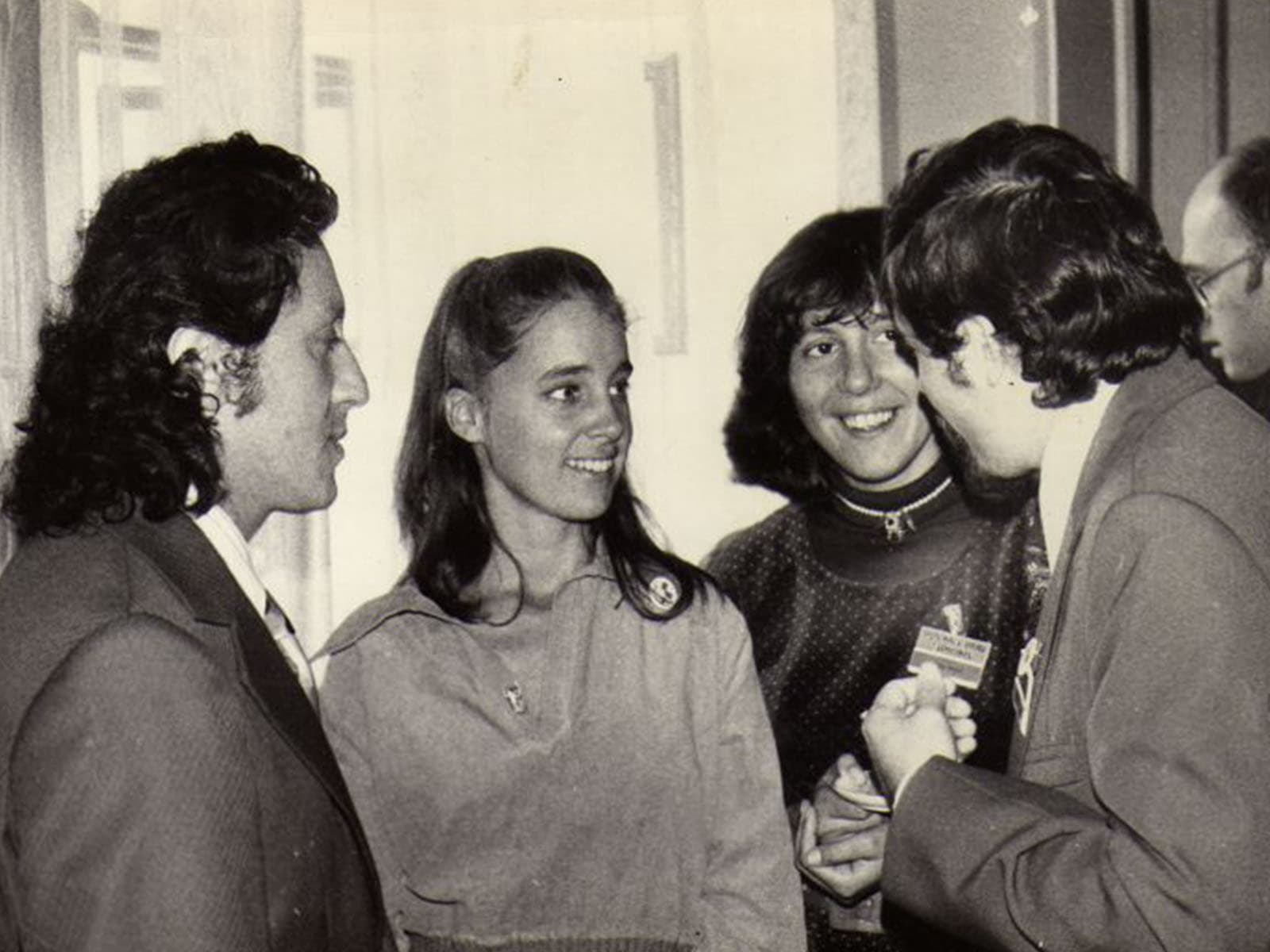
1981 - 1989
Martial law and humanitarian activities
After martial law was introduced in December 1981, the Polish Red Cross immediately became involved in helping the internees and their families. The organization provided parcels with food, clothing, and hygiene products. In cooperation with the International Committee of the Red Cross, the Polish Red Cross coordinated the inflow of donations from abroad, which were sent to hospitals, schools, orphanages, and social welfare centers.
In the 1980s, the Polish Red Cross developed new forms of activity, such as food distribution points, canteens, and shelters. Care services were particularly important - in 1988, over 95,000 people were under the care of the Polish Red Cross. The Voluntary Blood Donor Movement developed dynamically, with blood donation weeks and days organized and HDK clubs established.
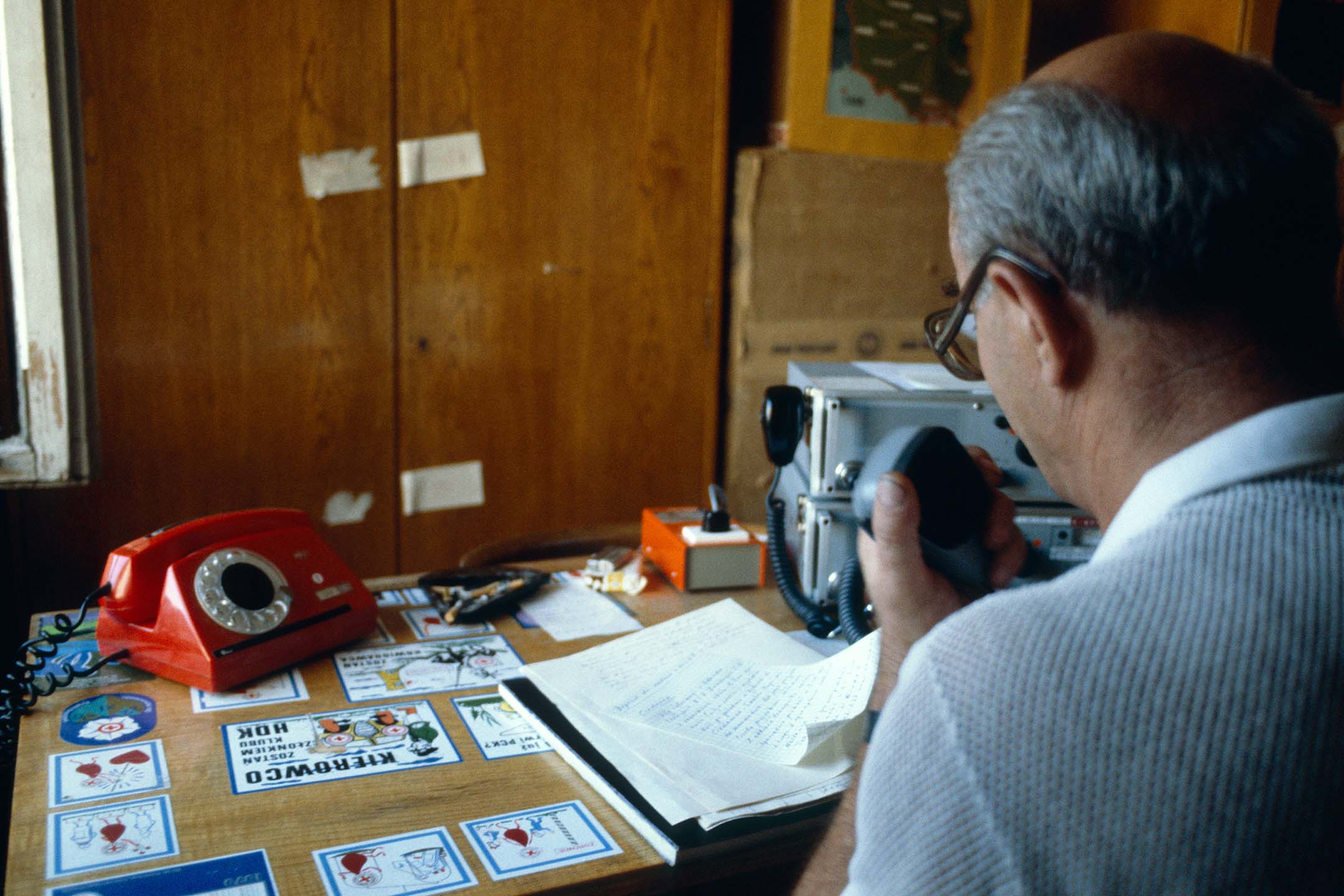
1990 - 2000
The beginnings of transformation and new challenges
With the political changes after 1989, the PCK found itself in a new political and socio-economic reality. These changes influenced the organizational structure and the method of financing the association's activities. 1990 was the last year in which central subsidies covered the entire salaries of PCK employees. Since 1991, the organization had to rely on its own income and the support of local governments and donors.
New challenges included adapting to the principles of the market economy and the need to intensify fundraising activities. Voivodship branches gained greater autonomy, which required decentralization of substantive and organizational decisions. This process proved difficult, because the association had to adapt to rapidly changing socio-economic conditions.
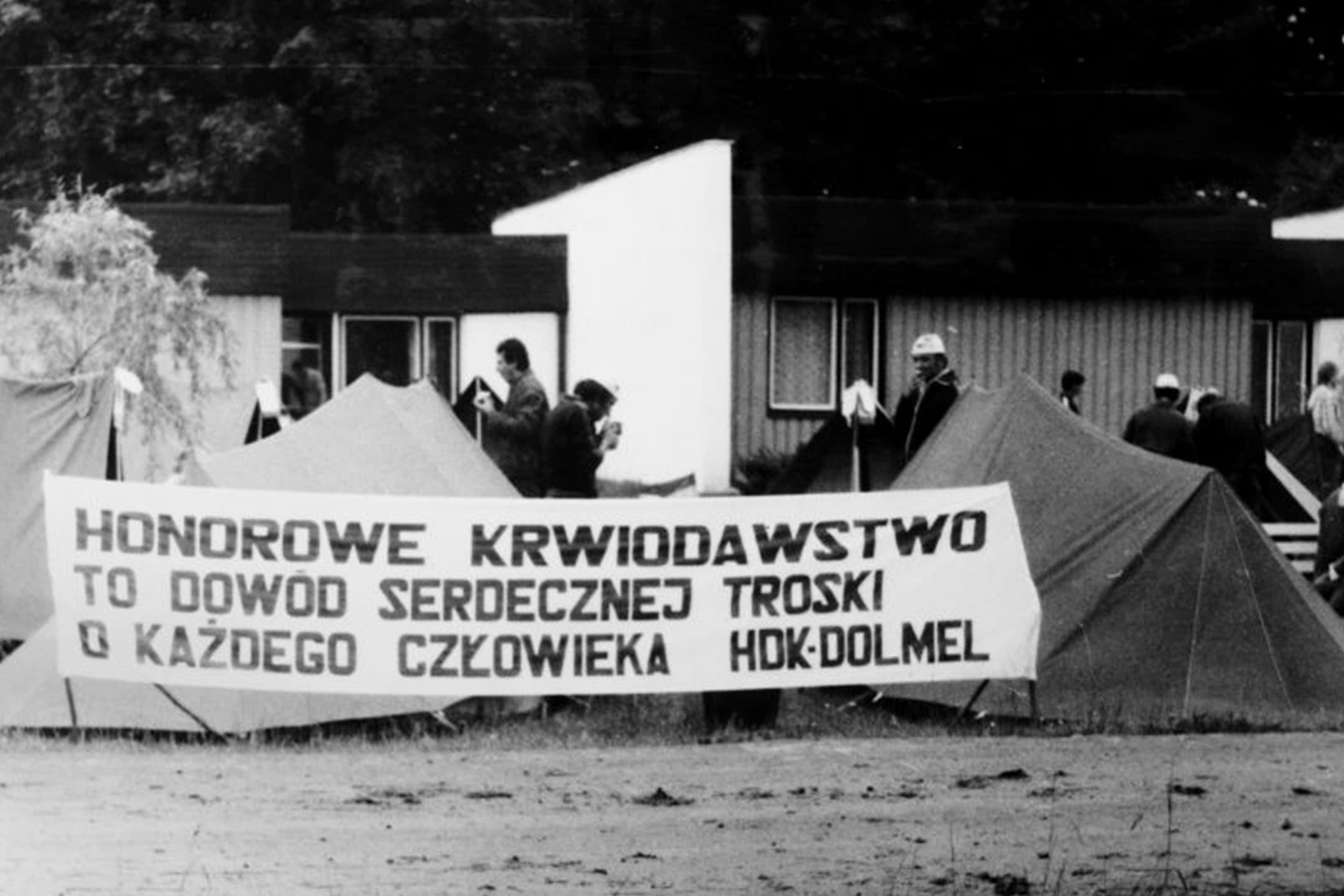
1995 - 1997
New programs and international support
In the mid-1990s, the Polish Red Cross intensified its activities to help refugees and people in difficult life situations. Under an agreement with the Ministry of Foreign Affairs, programs were implemented to help foreigners, including refugees from the Middle East, Africa and the former Yugoslavia. An important element of the activities was cooperation with the UN High Commissioner for Refugees and national societies of the Red Cross.
Thanks to the support of the International Red Cross and Red Crescent Movement, the organization was able to send over 200 humanitarian transports to countries affected by crises, such as Romania, Albania, Iran, Peru and Lithuania. The Polish Red Cross was also actively involved in health promotion, conducting educational campaigns on the fight against AIDS and infectious diseases.

1998 - 2000
Development of educational and rescue activities
At the end of the decade, the organization focused on the development of special rescue groups and the promotion of international humanitarian law. Central intervention warehouses were established in Zgierz, Słupsk, Katowice and Wiązowna, which allowed for a faster response in crisis situations. Special rescue groups were also established, which included young members of the Polish Red Cross and professionals related to rescue, such as firefighters and doctors.
The Polish Red Cross continued to organize the Warsaw Summer School in the field of international humanitarian law and developed competitions for scientific papers in this field. Health promotion included various educational activities, including social campaigns, talks and lectures. Particular attention was paid to young people, involving them in projects related to health education and humanitarian aid.
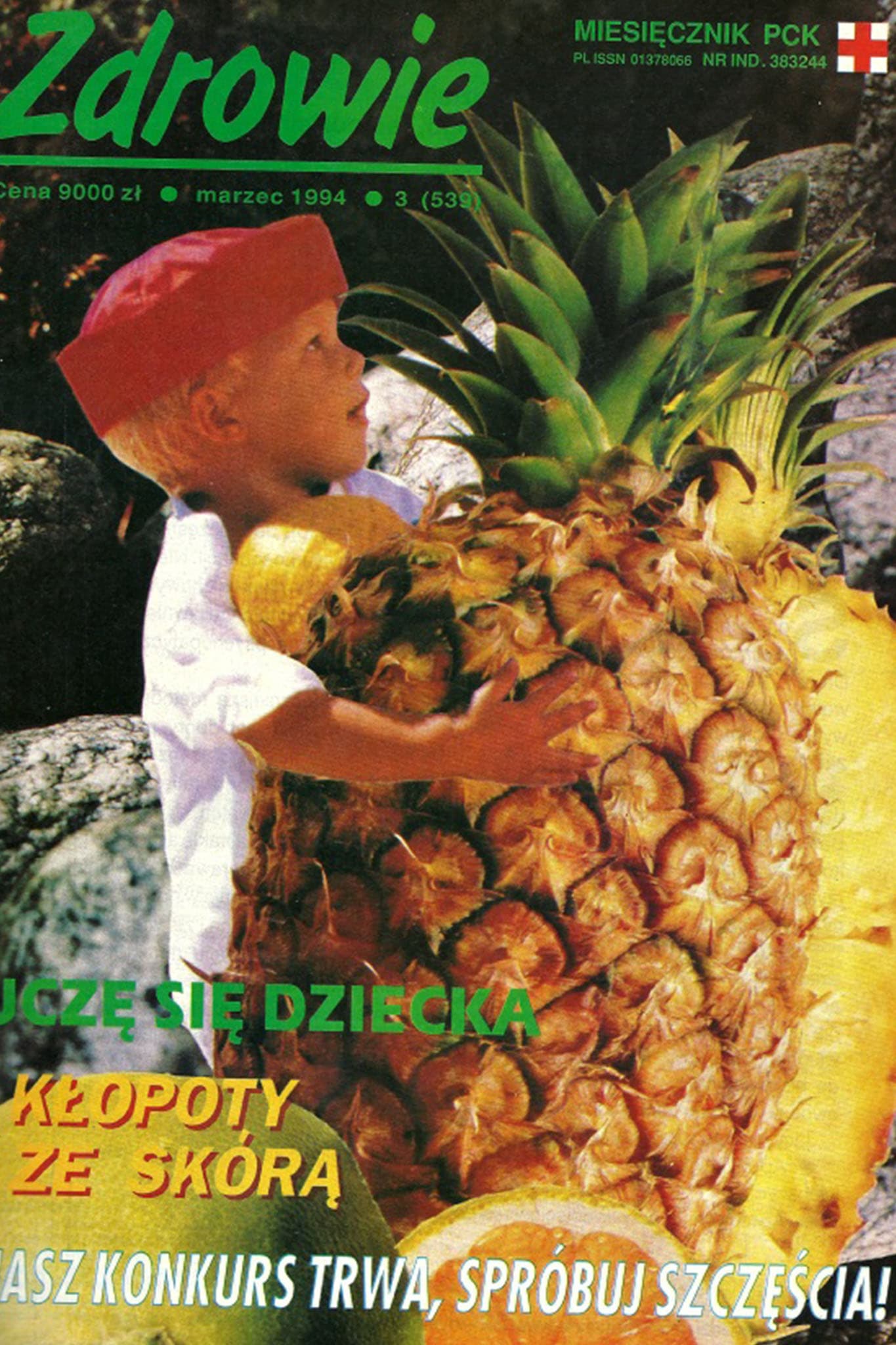
2001 - 2025
Business development in response to contemporary challenges
In the new millennium, the Polish Red Cross intensified its activities for local communities and the development of humanitarian programs. Particular emphasis was placed on the promotion of voluntary blood donation, educational programs and assistance to victims of natural disasters.
In 2001, the Polish Red Cross launched a broad health education program aimed at school youth. Programs such as "First Aid School" and "Young Rescuers" aimed to develop practical skills and awareness in the field of providing first aid.
At the same time, the organization developed cooperation with international institutions, including the International Committee of the Red Cross and the Federation of Red Cross and Red Crescent Societies. As part of the cooperation, the Polish Red Cross provided assistance to refugees and supported victims of global humanitarian crises, such as the tsunami in Southeast Asia in 2004.
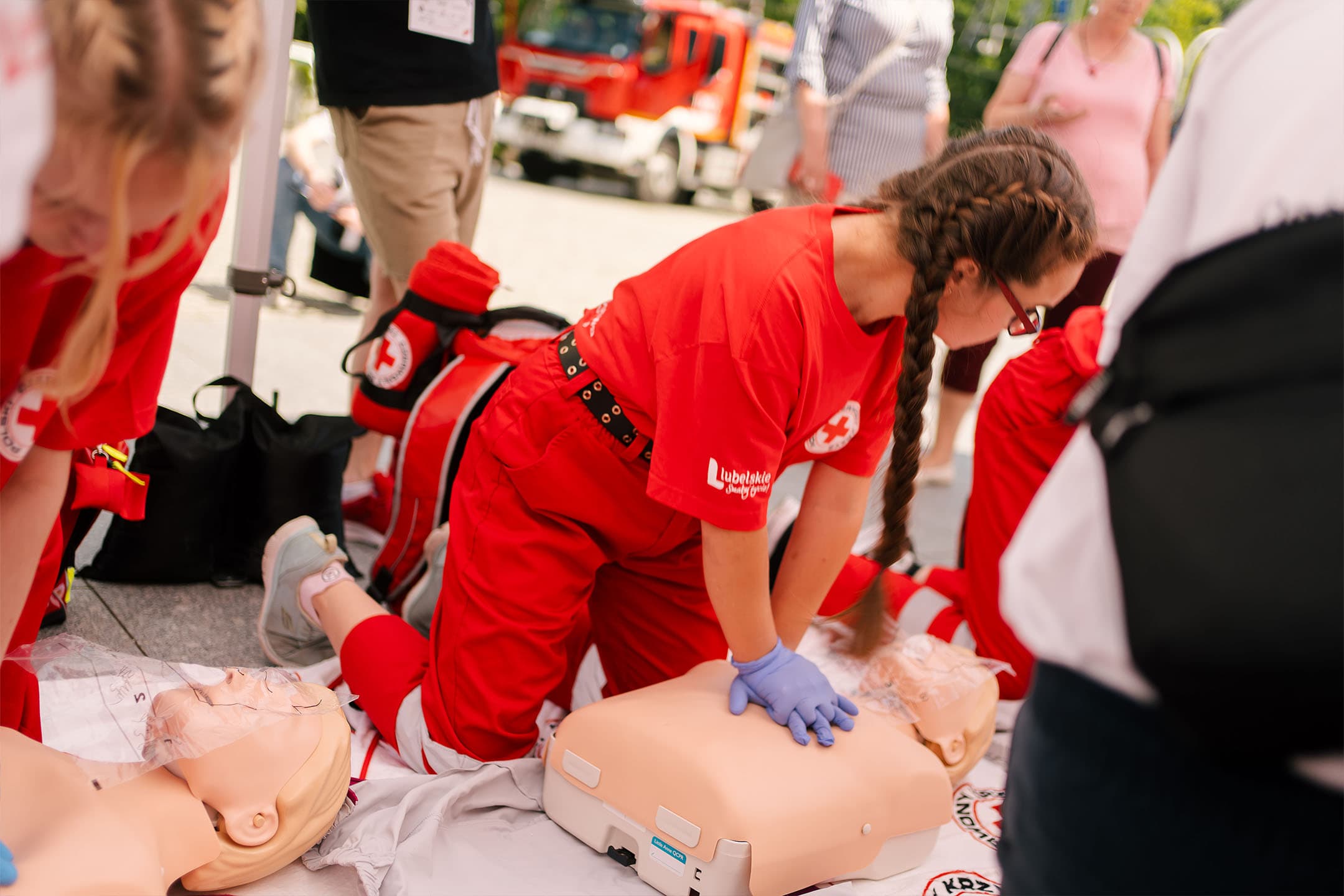
2011 - 2020
Modernization of the structure and response to new challenges
In the new millennium, the Polish Red Cross intensified its activities for local communities and the development of humanitarian programs. Particular emphasis was placed on the promotion of voluntary blood donation, educational programs and assistance to victims of natural disasters.
In 2001, the Polish Red Cross launched a broad health education program aimed at school youth. Programs such as "First Aid School" and "Young Rescuers" aimed to develop practical skills and awareness in the field of providing first aid.
At the same time, the organization developed cooperation with international institutions, including the International Committee of the Red Cross and the Federation of Red Cross and Red Crescent Societies. As part of the cooperation, the Polish Red Cross provided assistance to refugees and supported victims of global humanitarian crises, such as the tsunami in Southeast Asia in 2004.
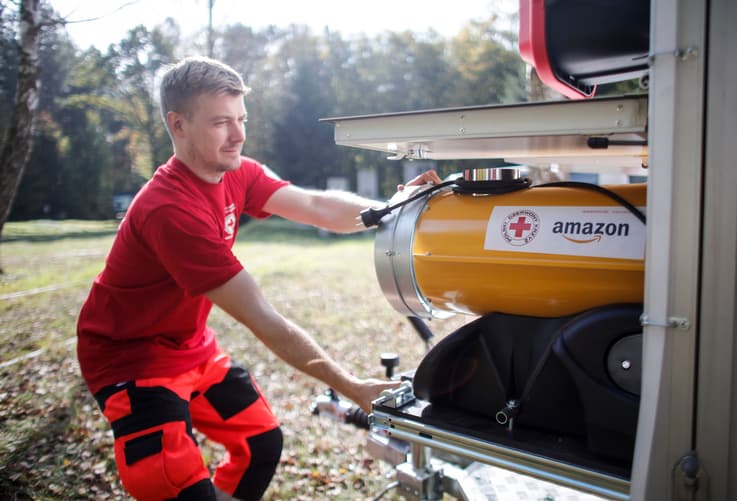
DUDEK J
2021 - 2025
Strengthening local and international activities
Recent years have seen the further development of educational programs and the expansion of local activities, such as first aid training and the organization of aid for disaster victims. In 2022, the Polish Red Cross became involved in helping refugees from Ukraine, providing food, medicines, and medical supplies for war victims.
The organization continues to develop support programs for young people, including initiatives promoting a healthy lifestyle and civic activity. The number of youth groups and volunteers has increased, which has contributed to the expansion of the scope of the Polish Red Cross's activities in the country.
To sum up,
The years 2001–2024 are a period of intensive development, modernization and involvement of the Polish Red Cross in new global and local challenges. The organization effectively combines tradition with modern technologies and methods of operation, remaining one of the most important pillars of humanitarianism in Poland.

See also
Sign
The red cross symbol, also known as the Geneva cross, was created during an international conference in Geneva in 1863 as a recognizable symbol for volunteers providing assistance to injured soldiers.
Strategy 2030
The Common Strategy 2030 is based on 3 pillars of action: readiness to act in times of crisis, actions for health and prevention, and activating society and reducing social inequalities.
You are currently viewing a page filtered by content from the department. Cała PolskaIf you want to view content from Cała Polskaclick the button